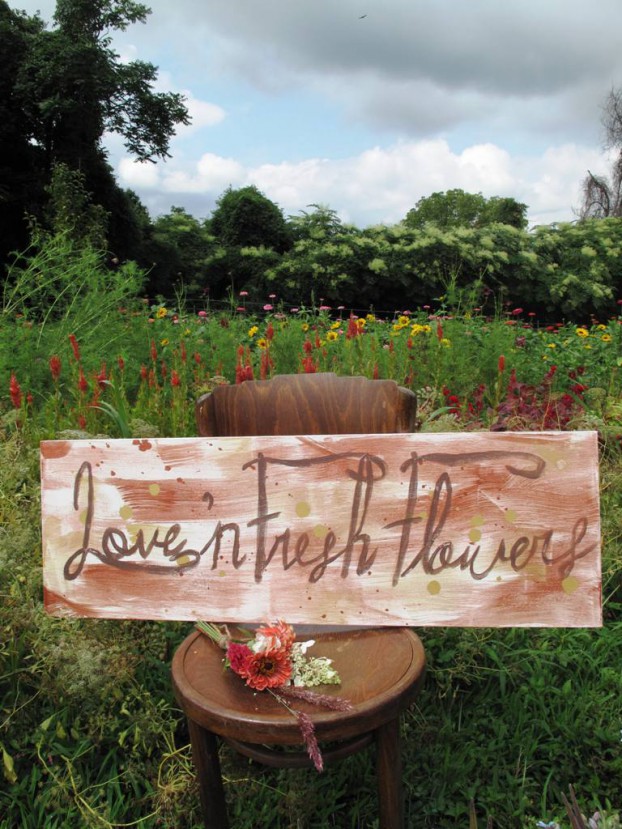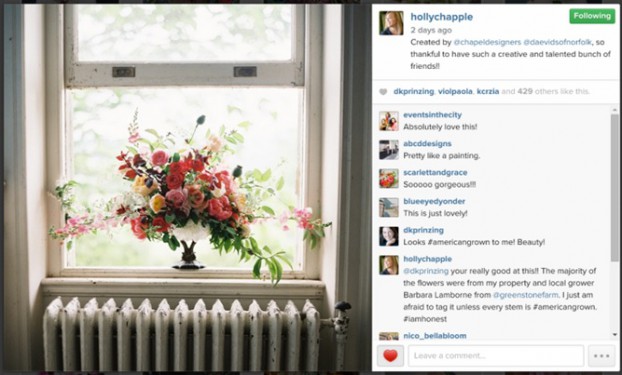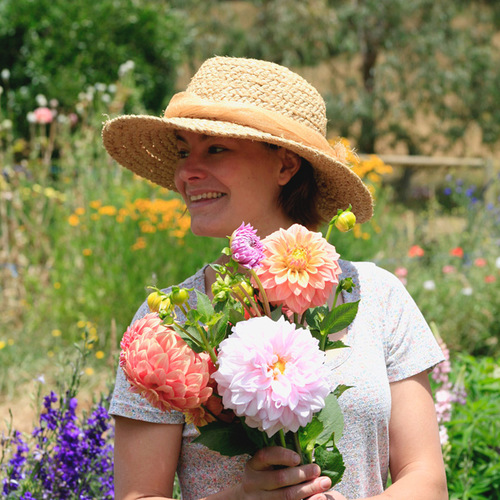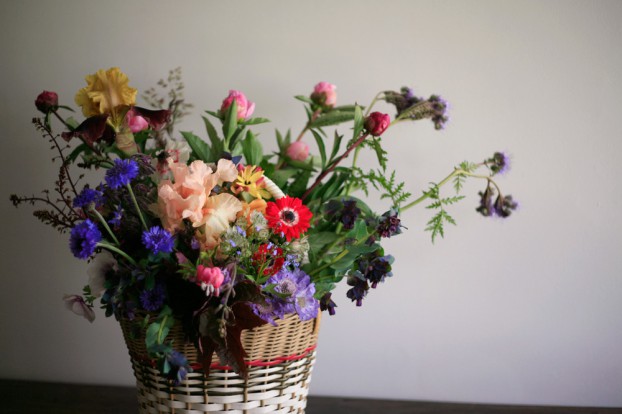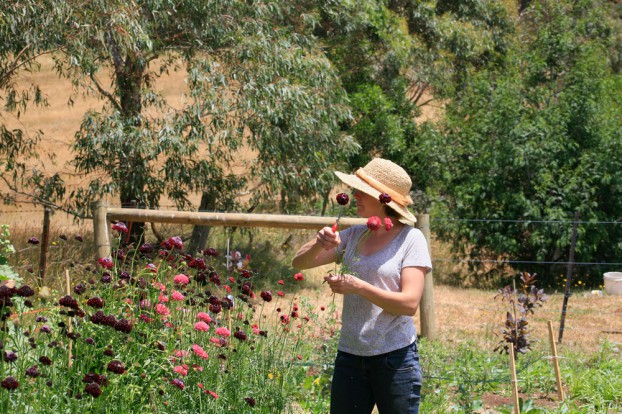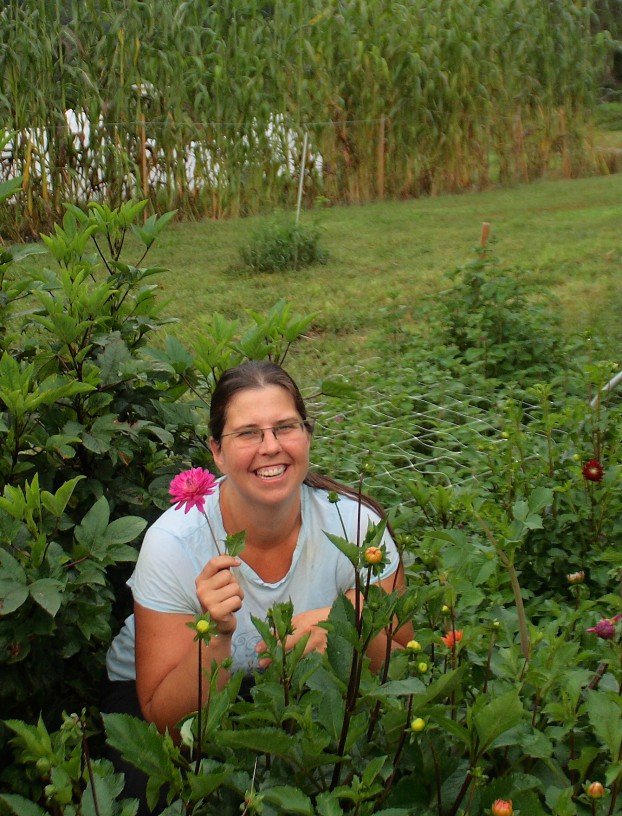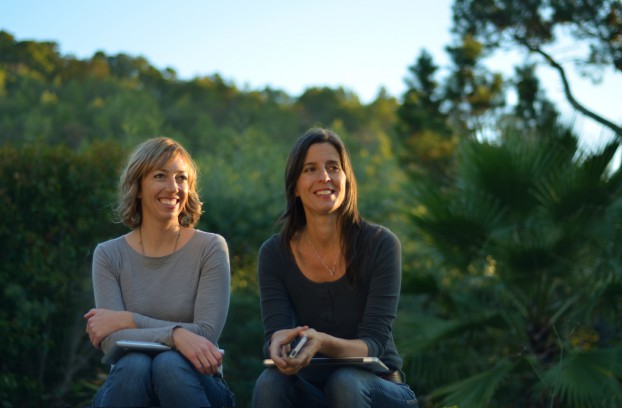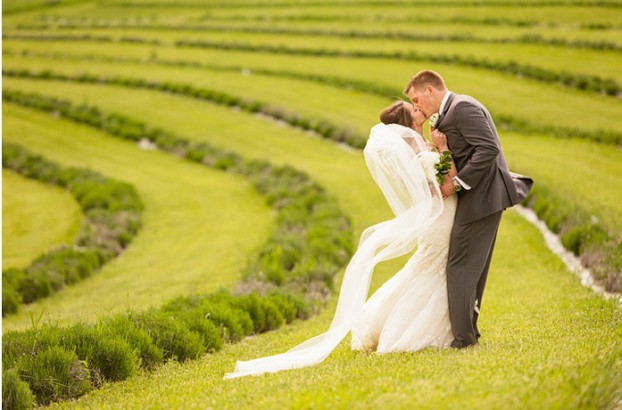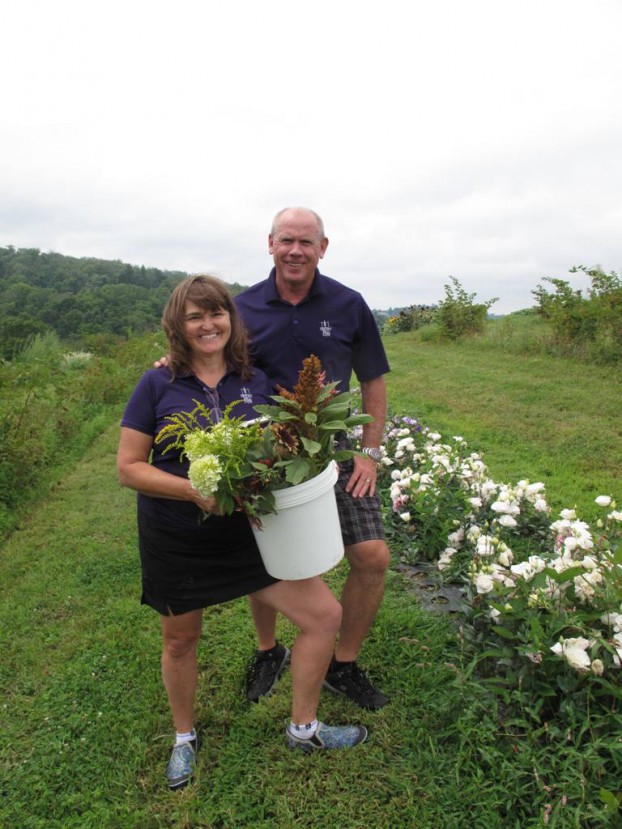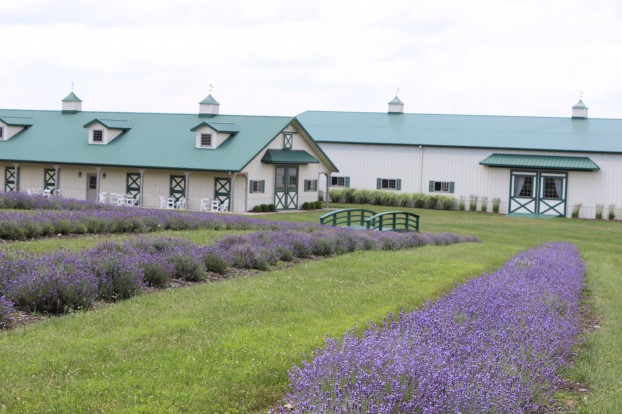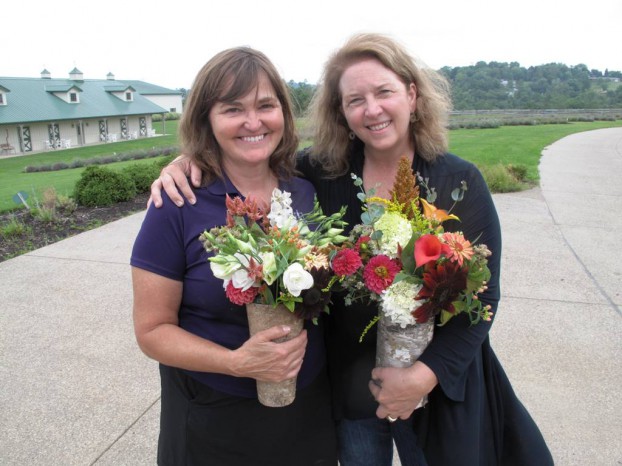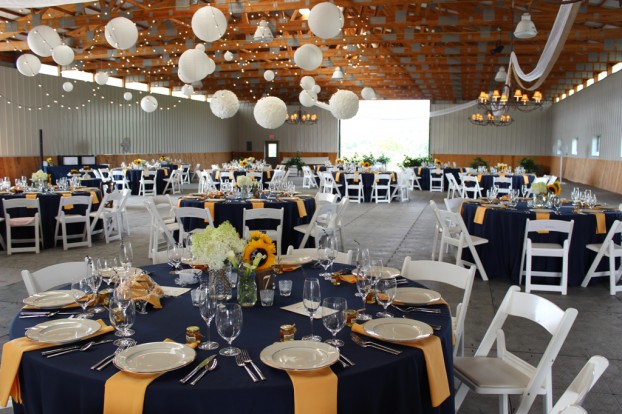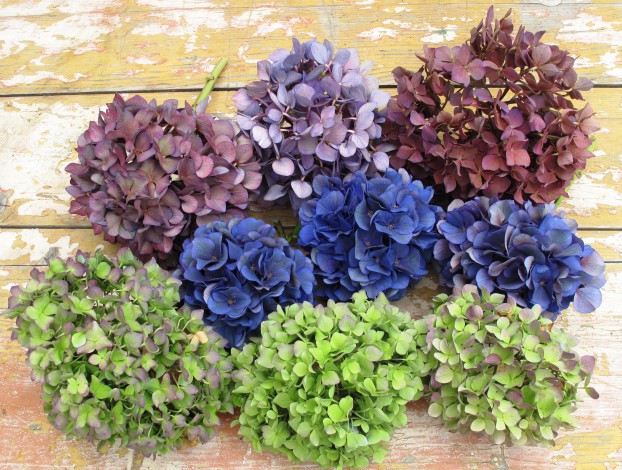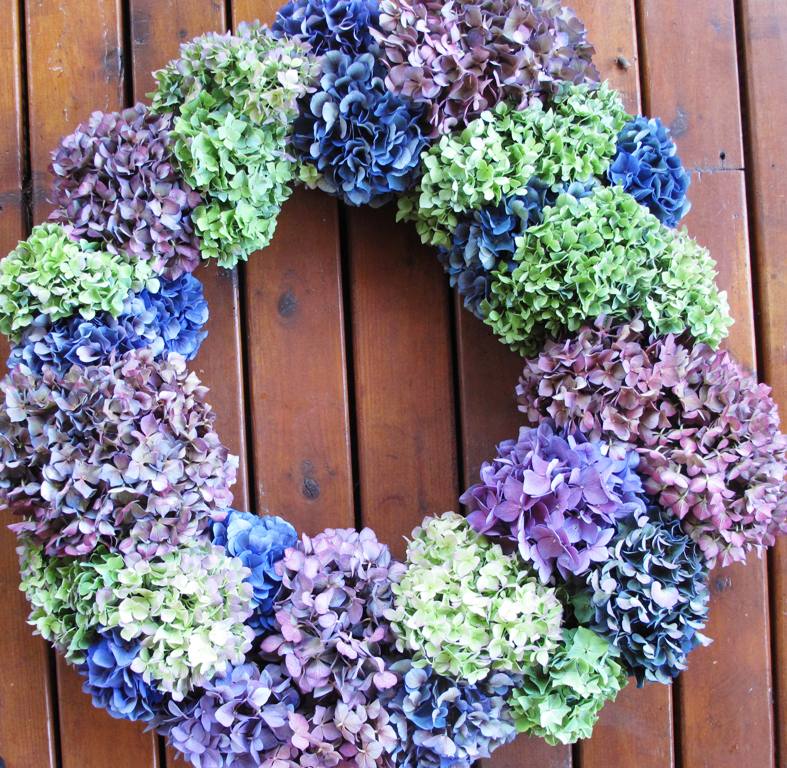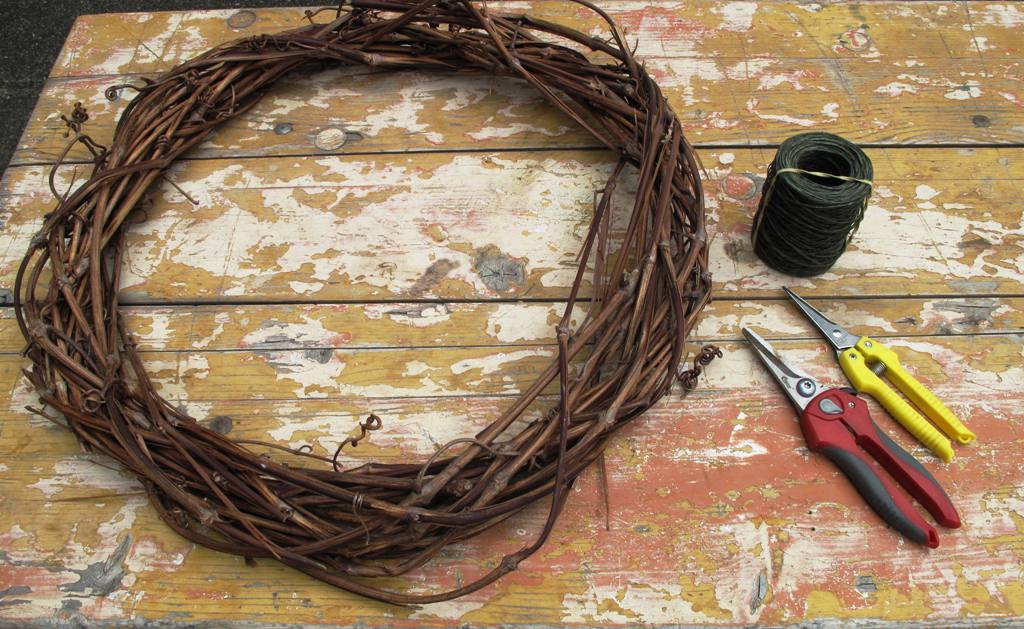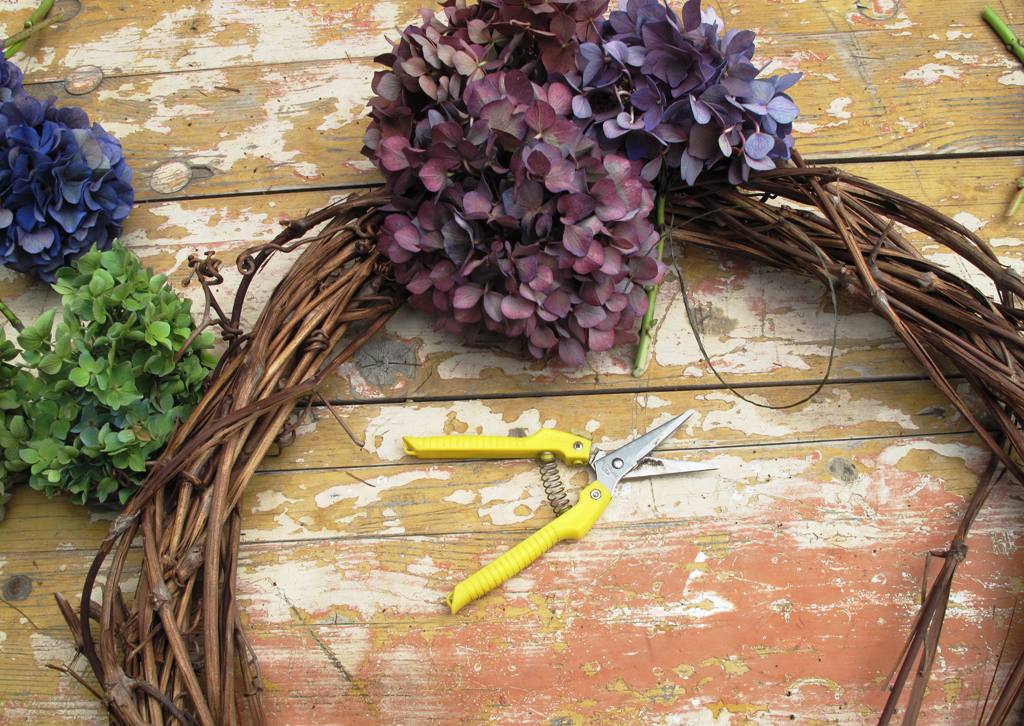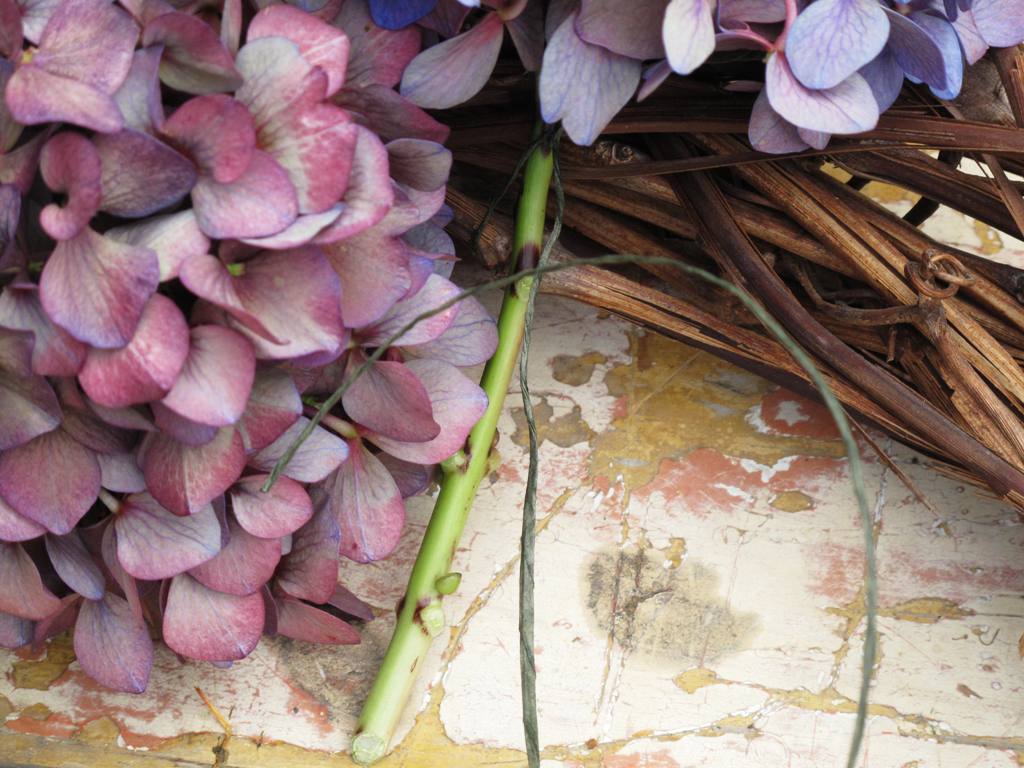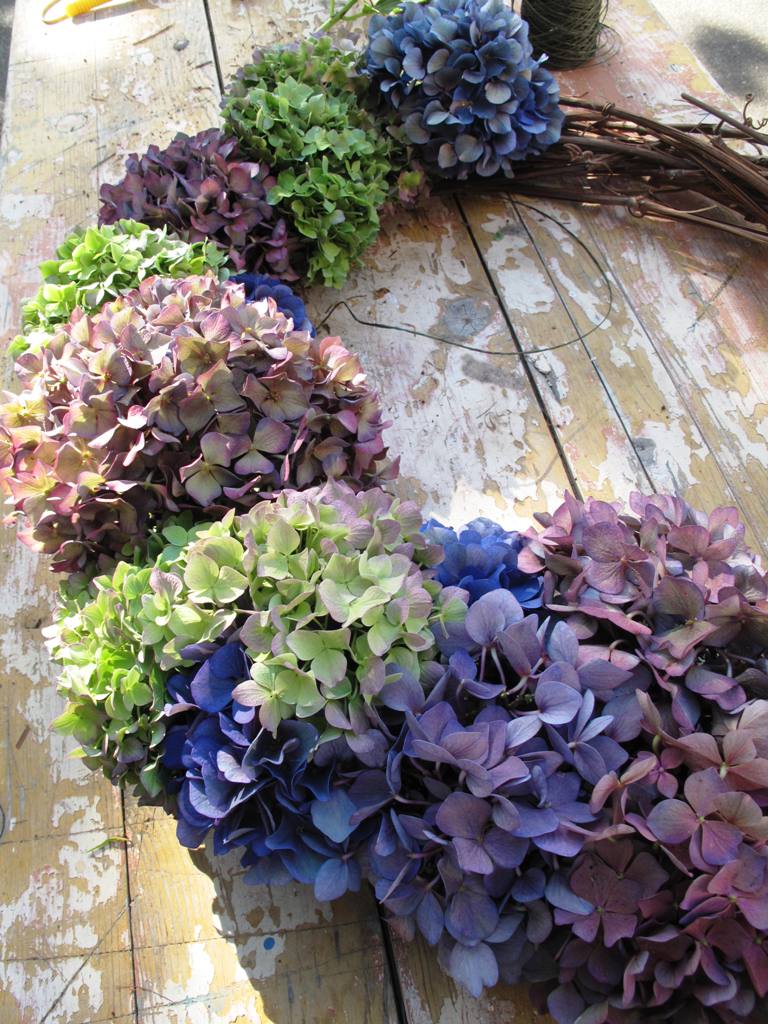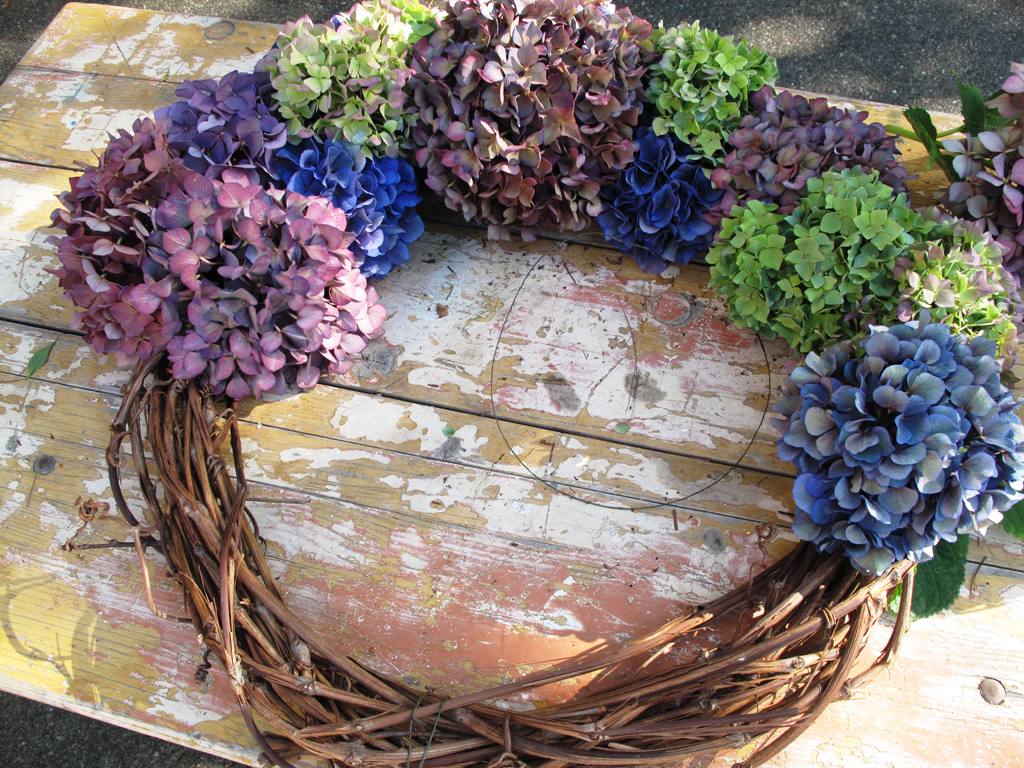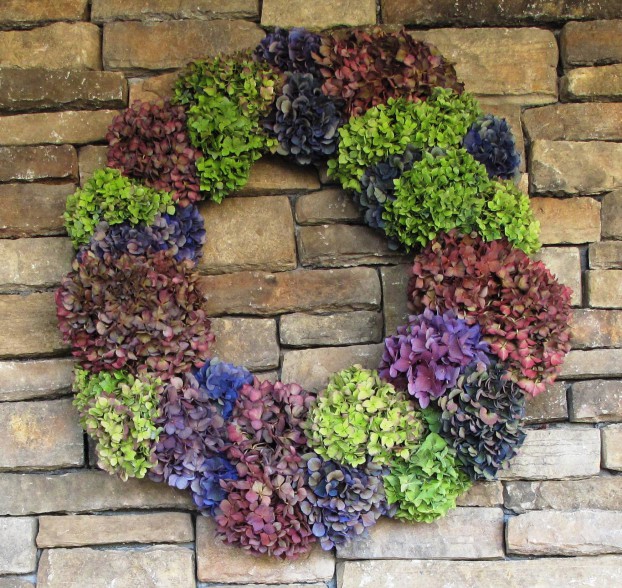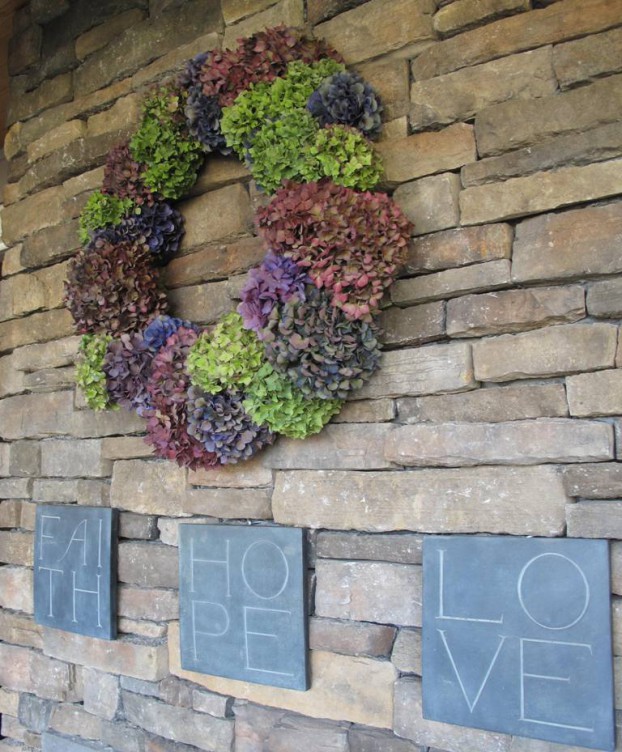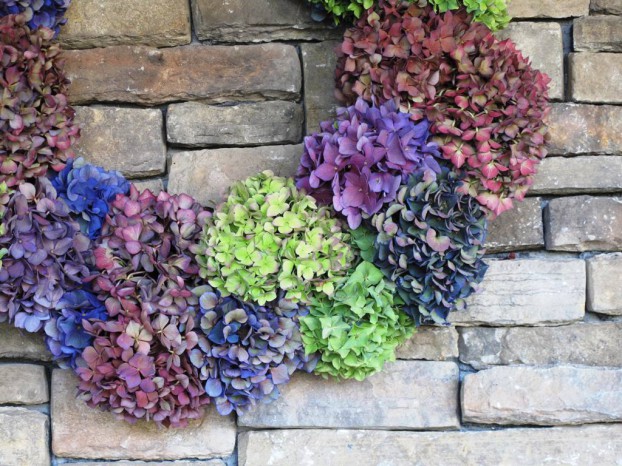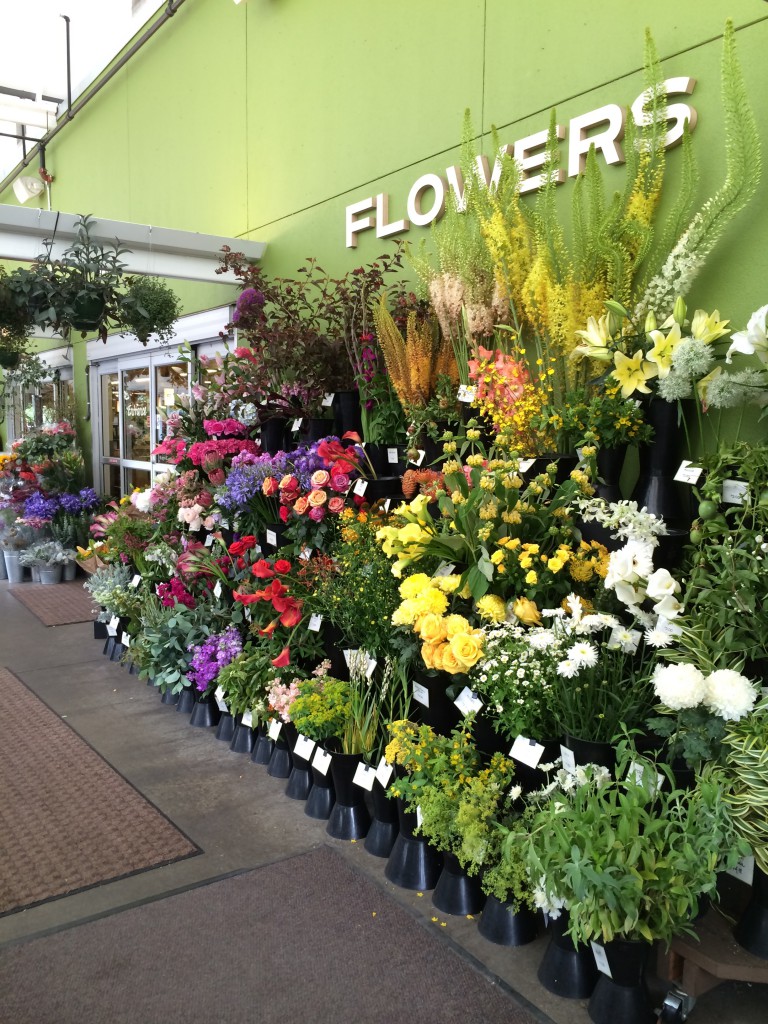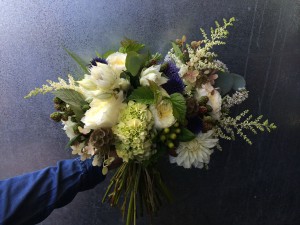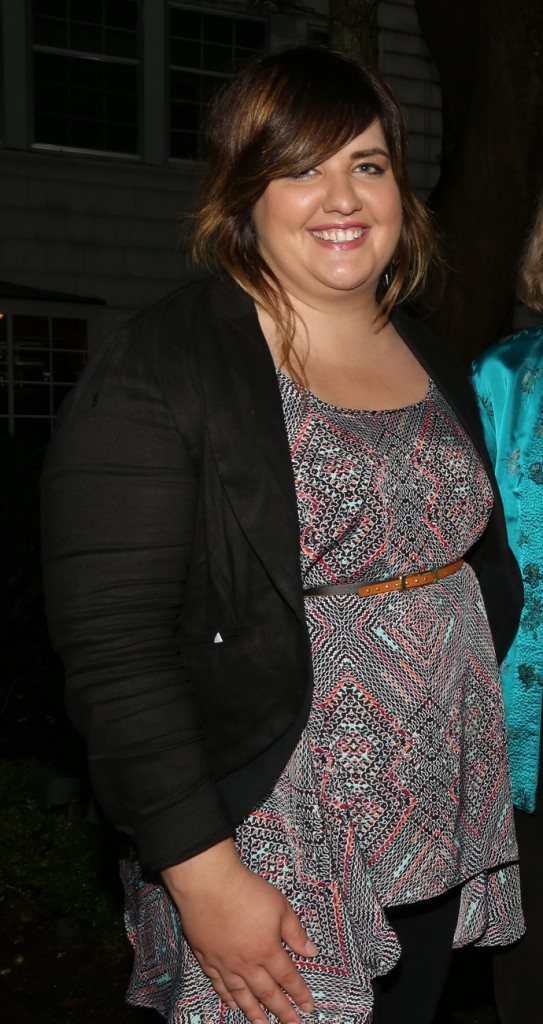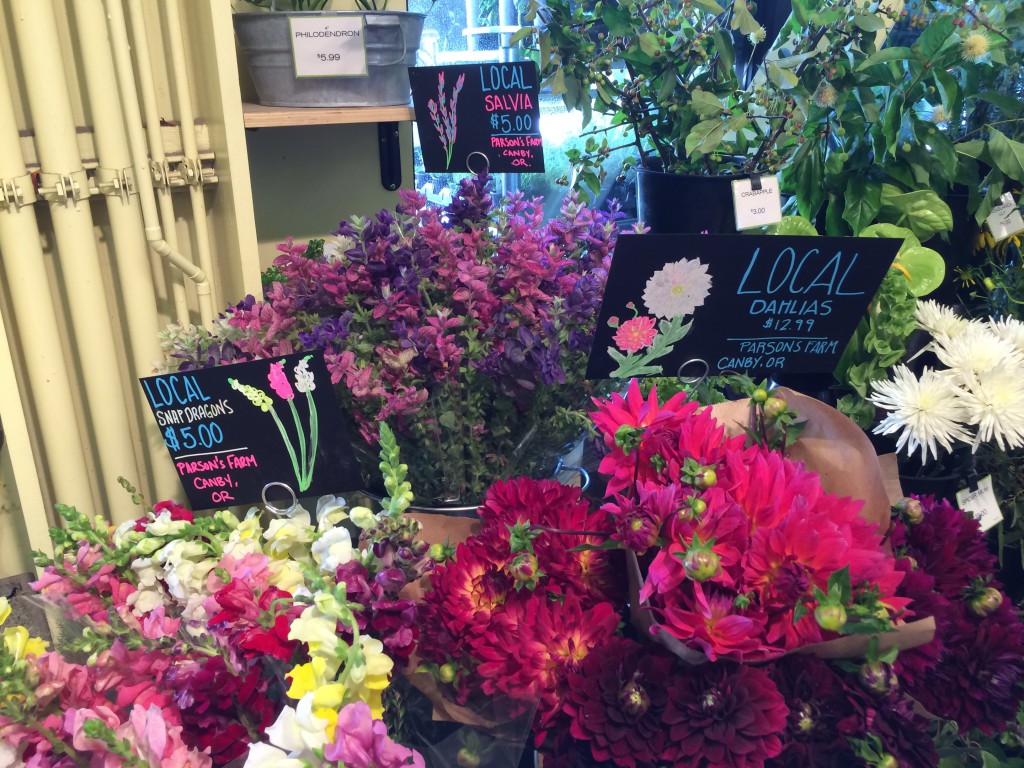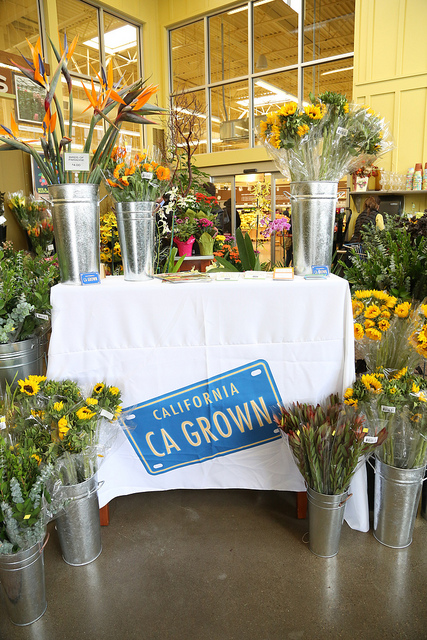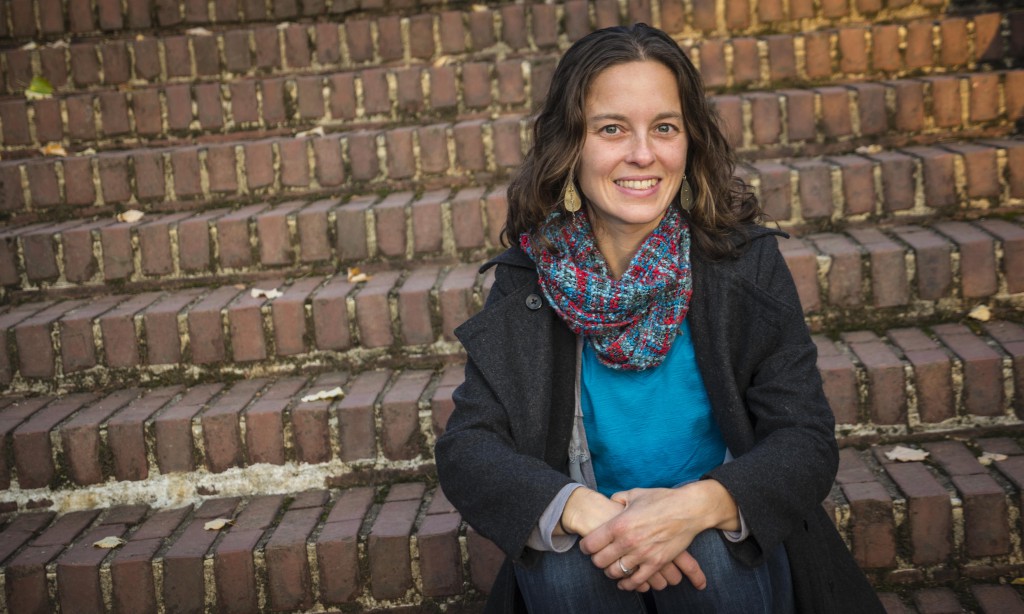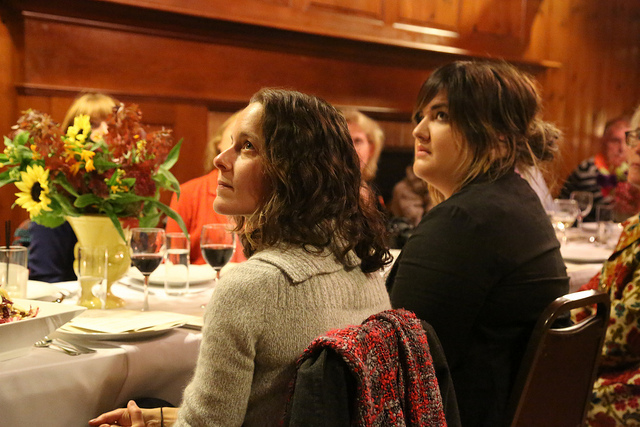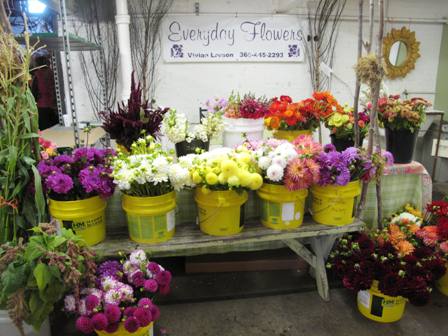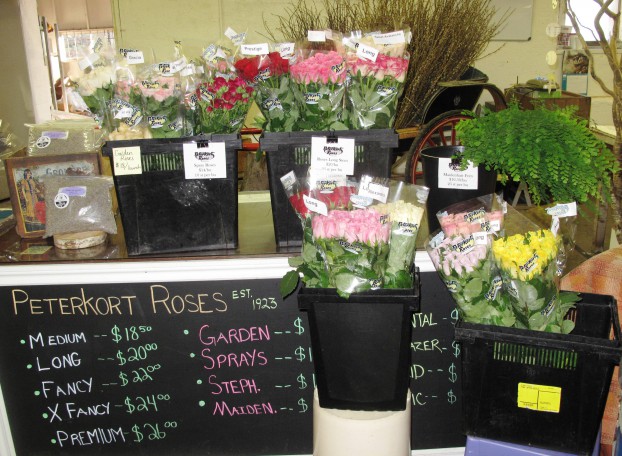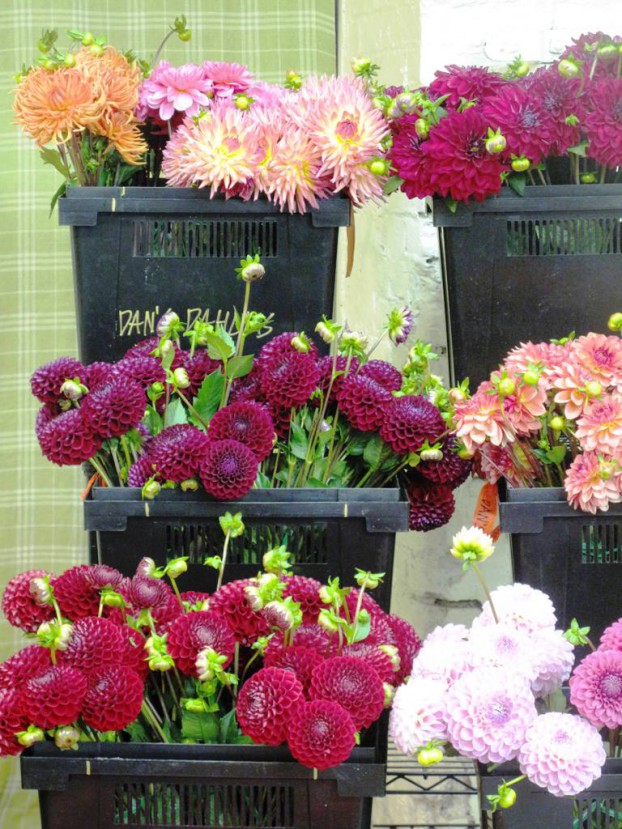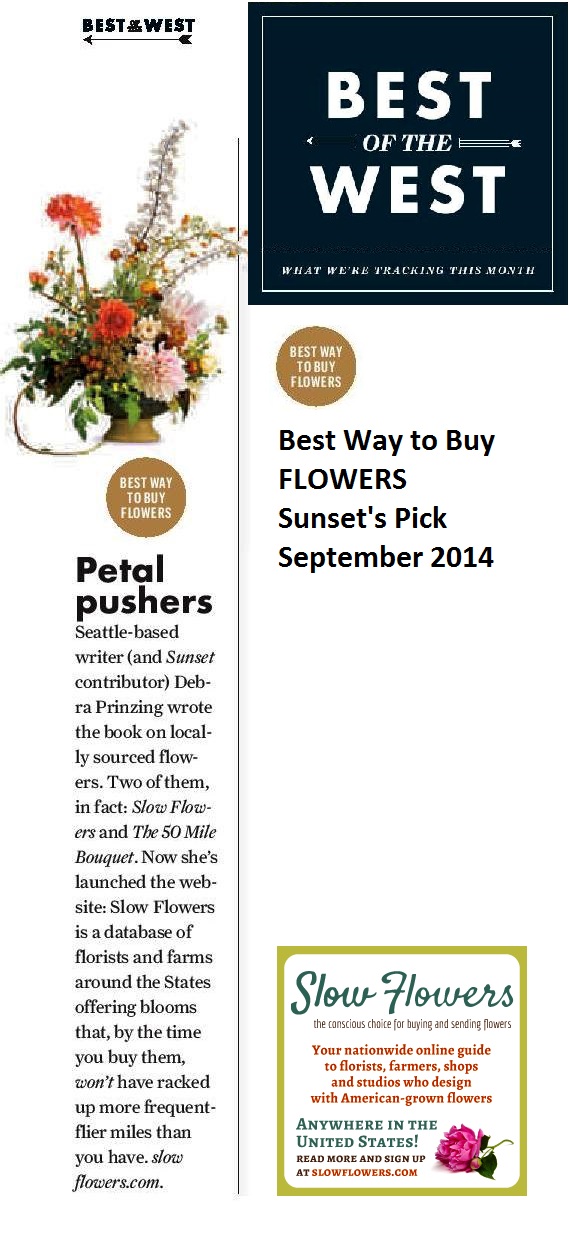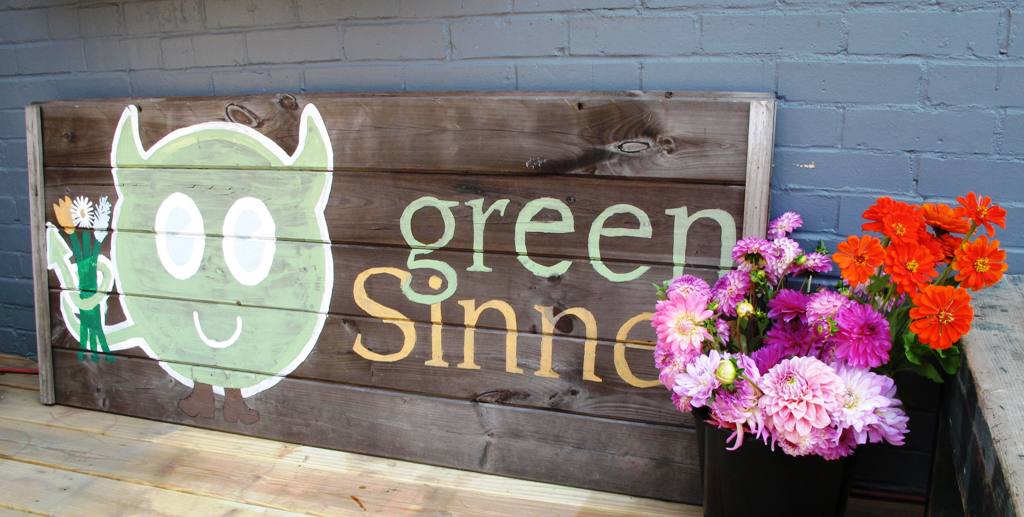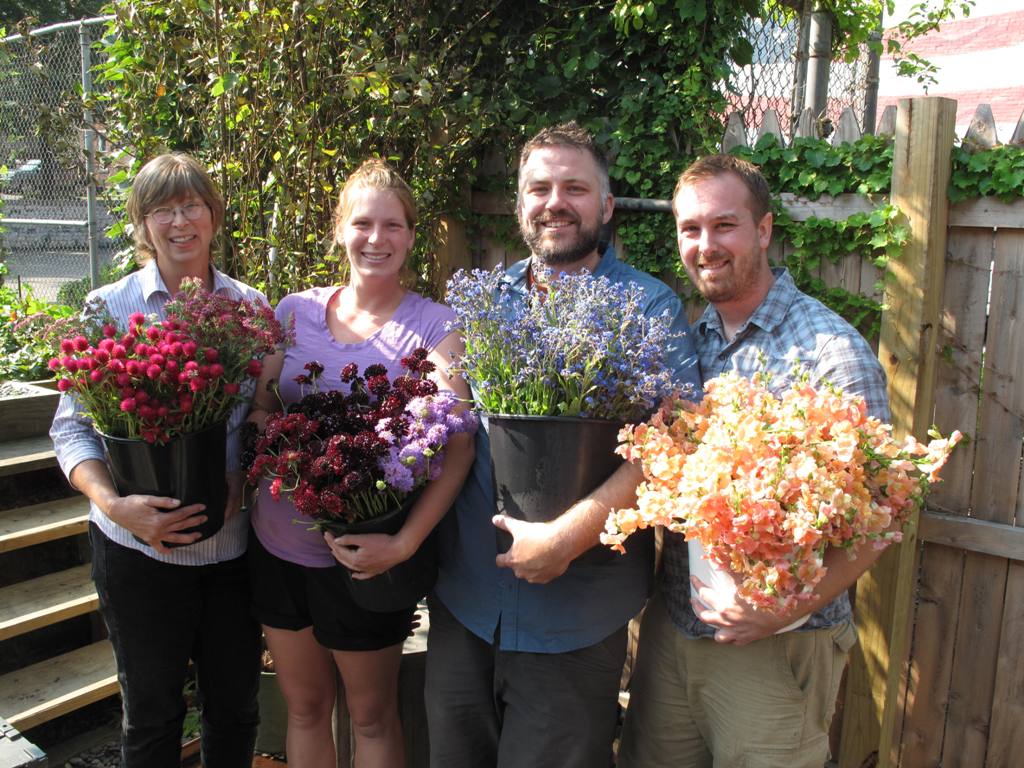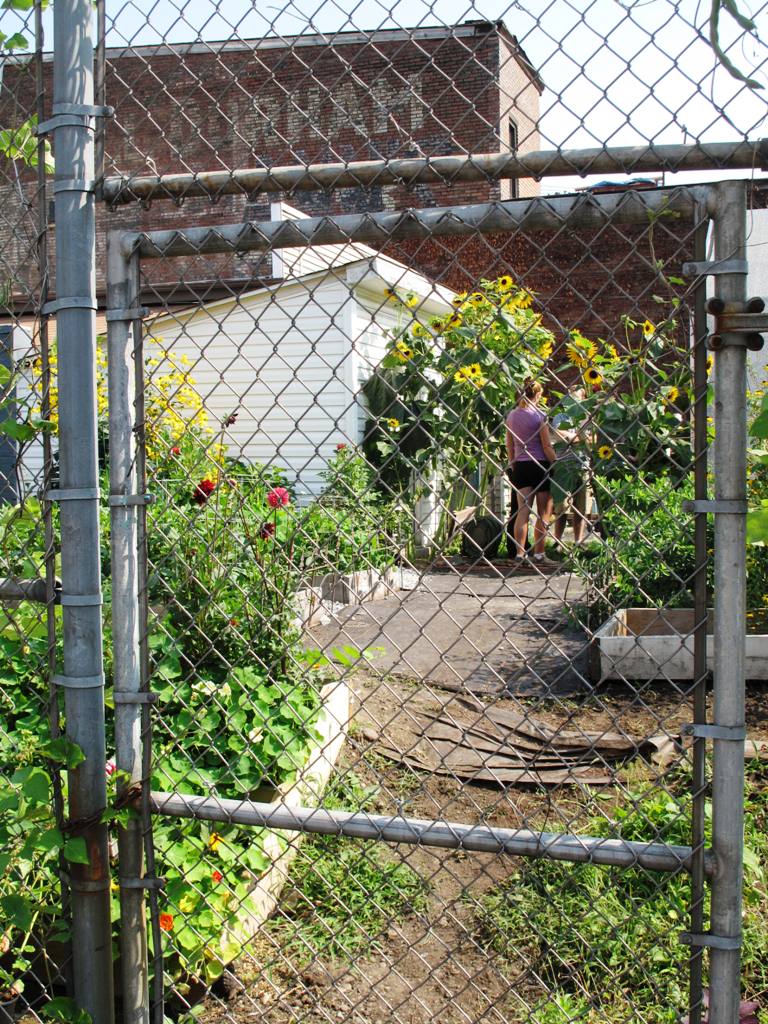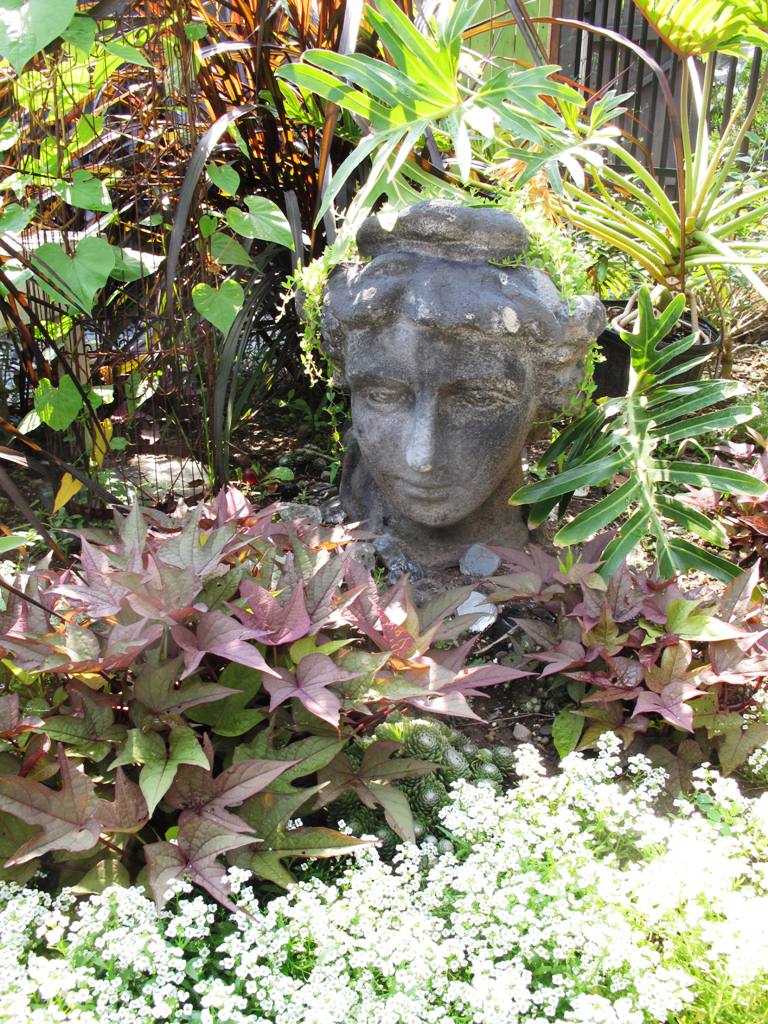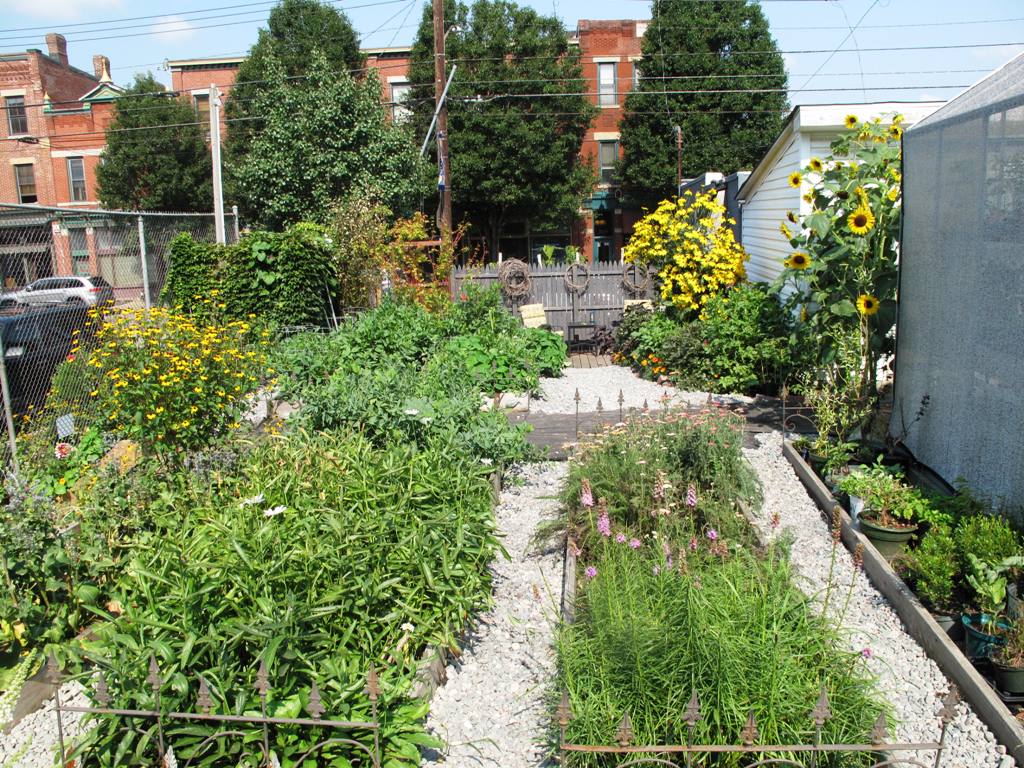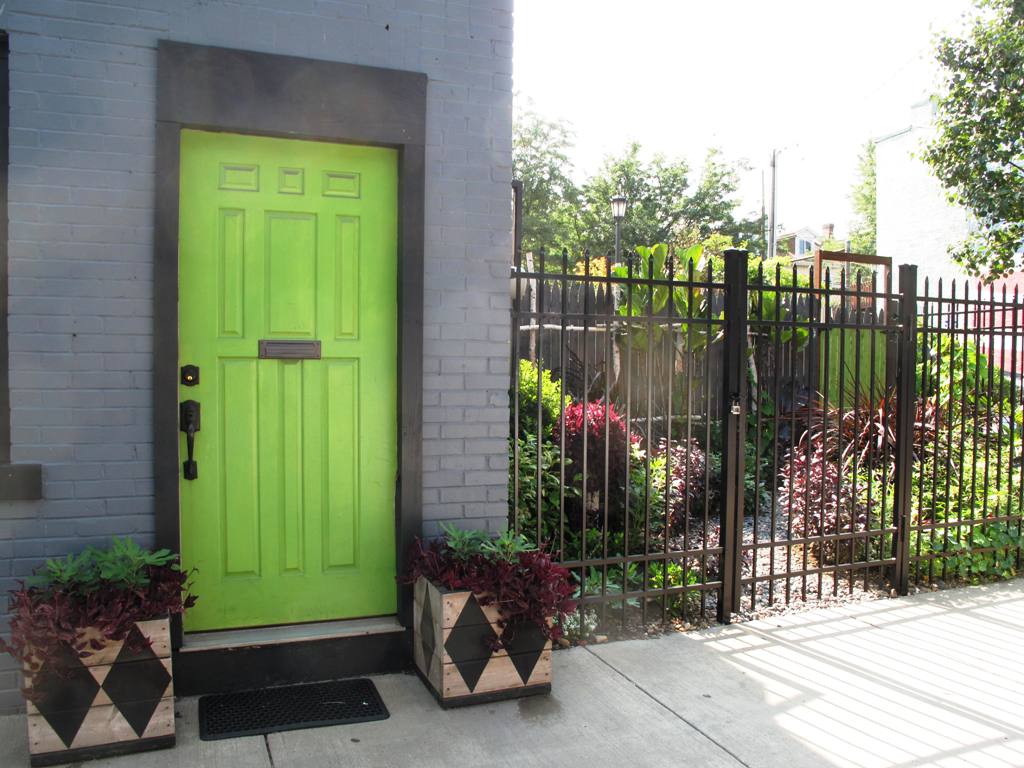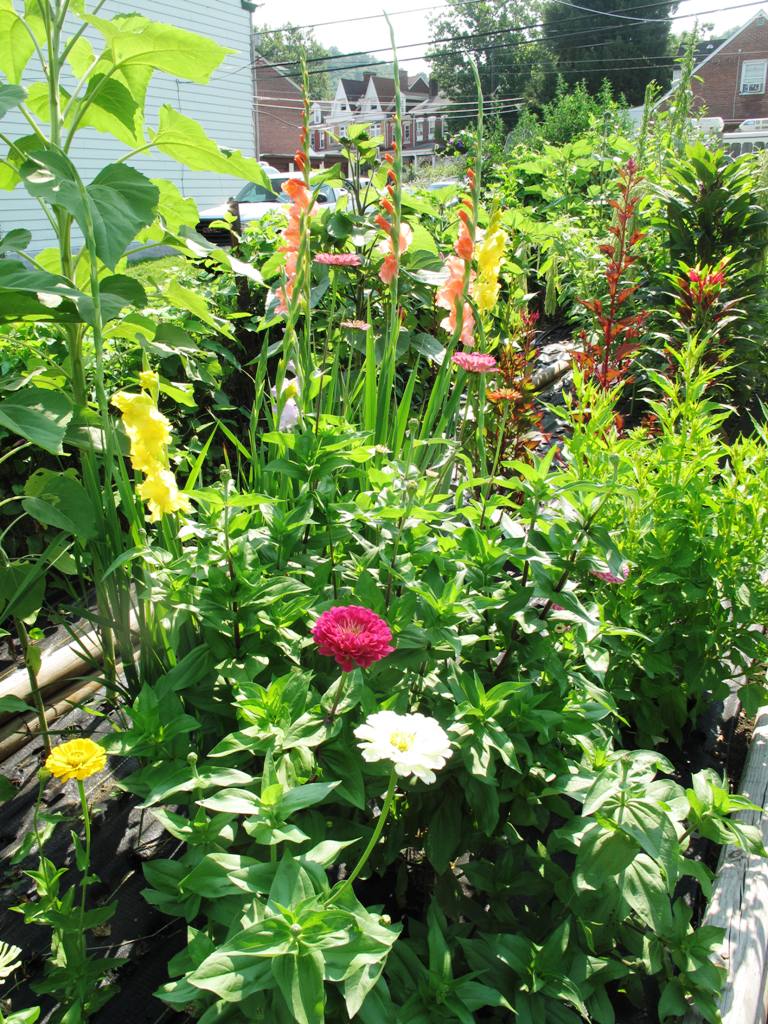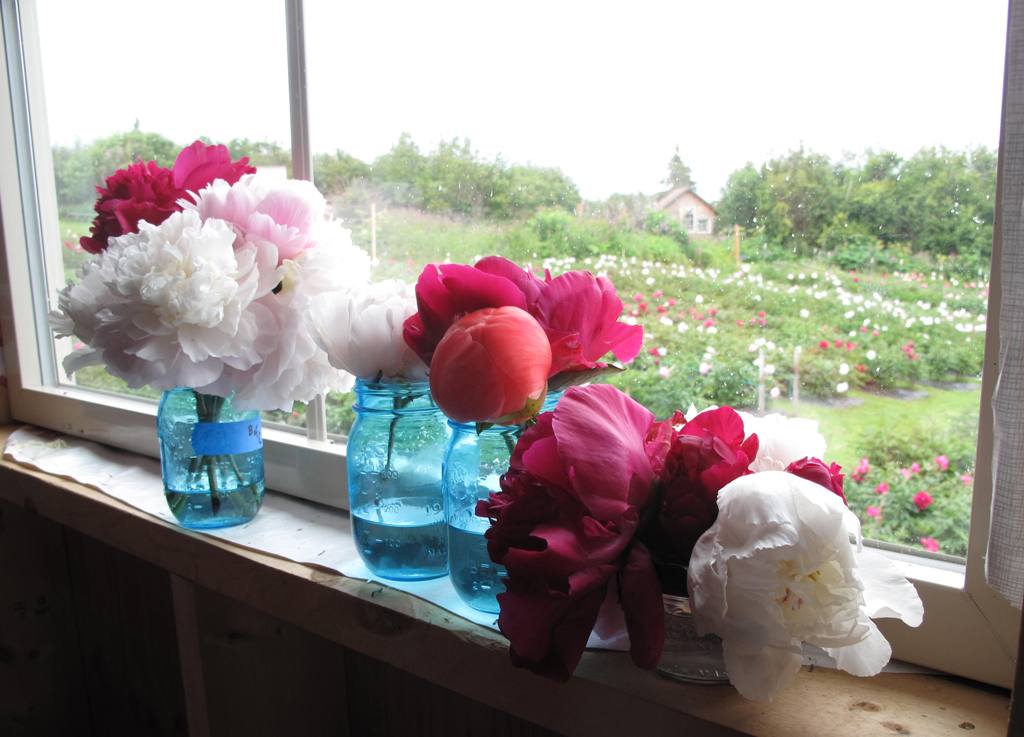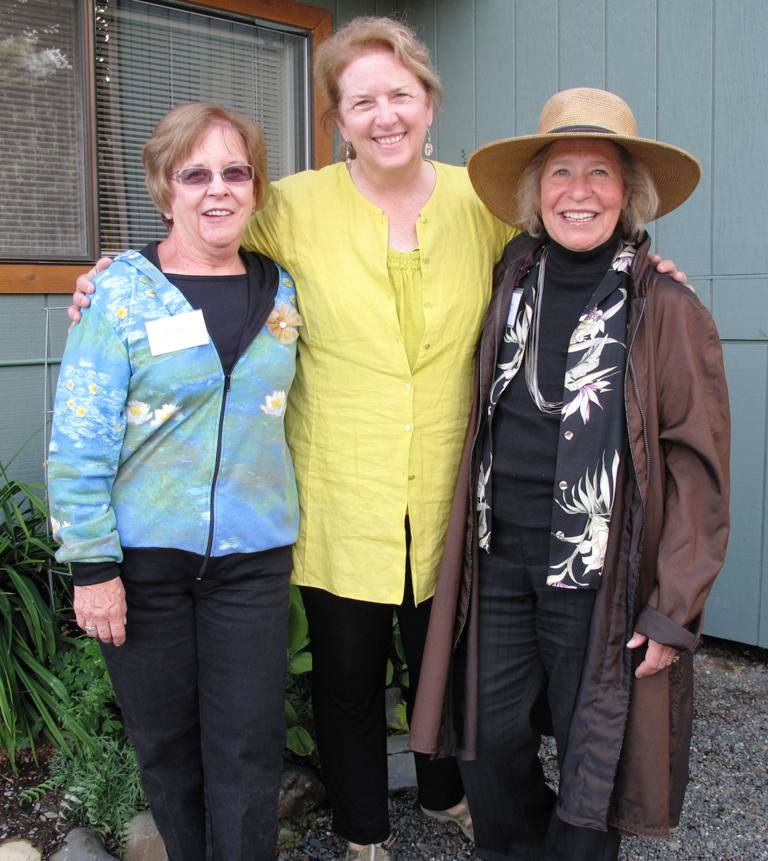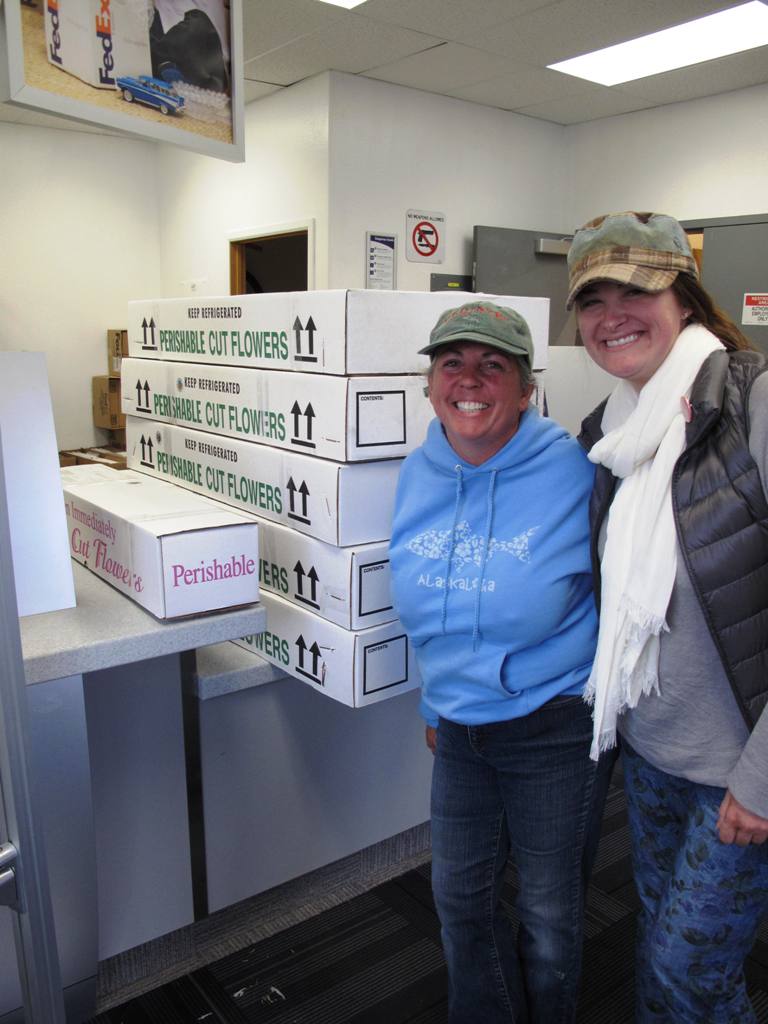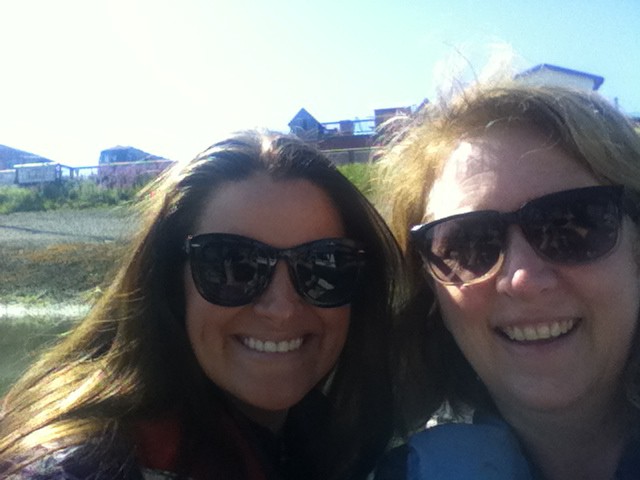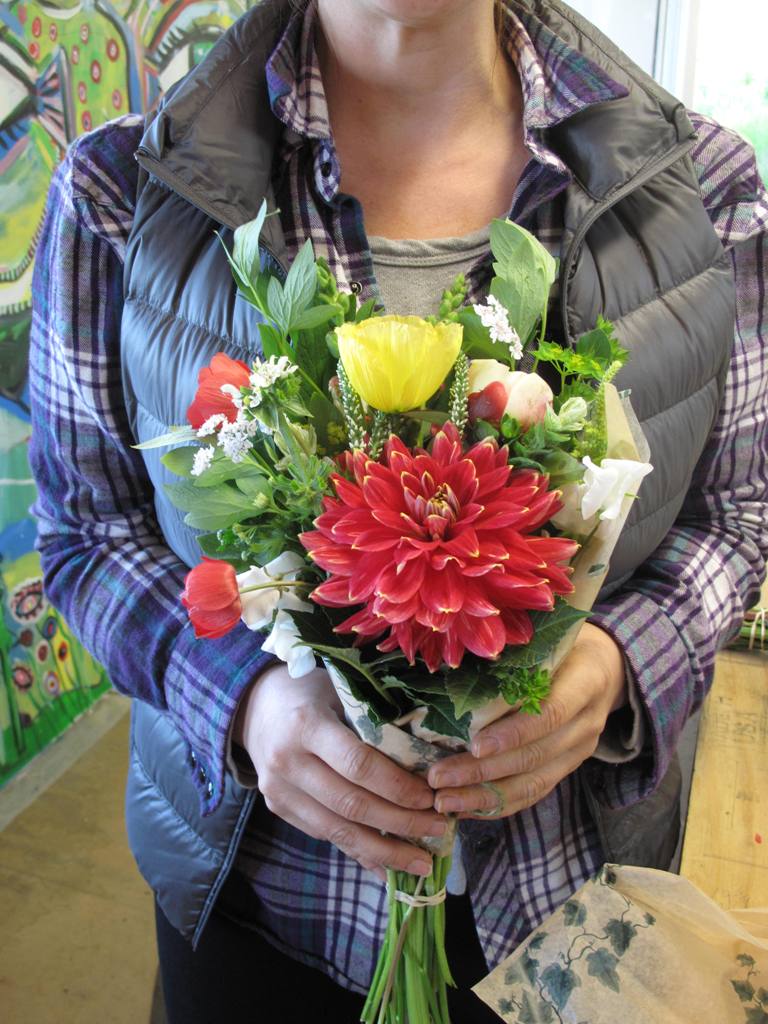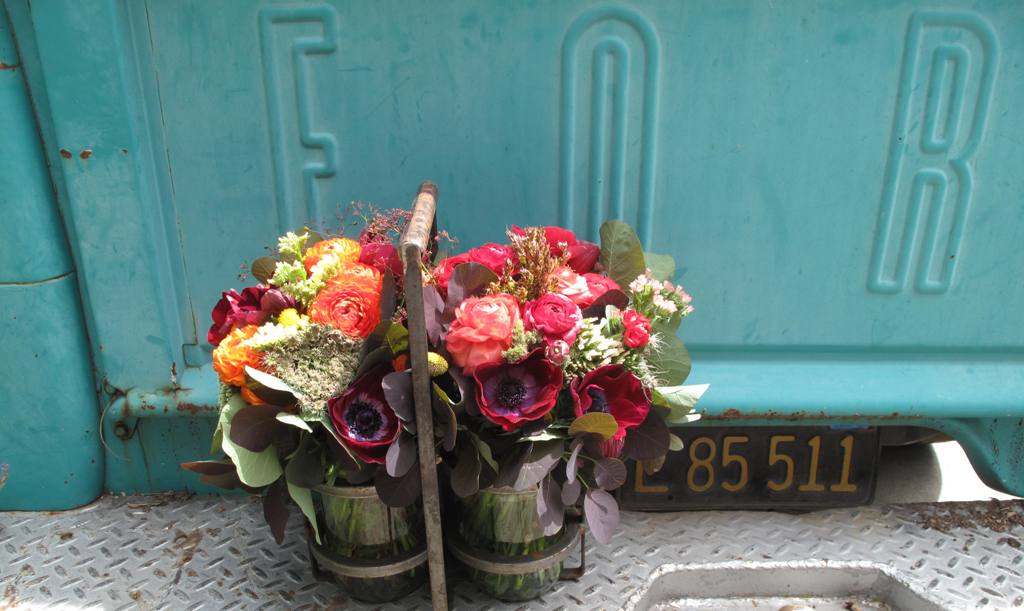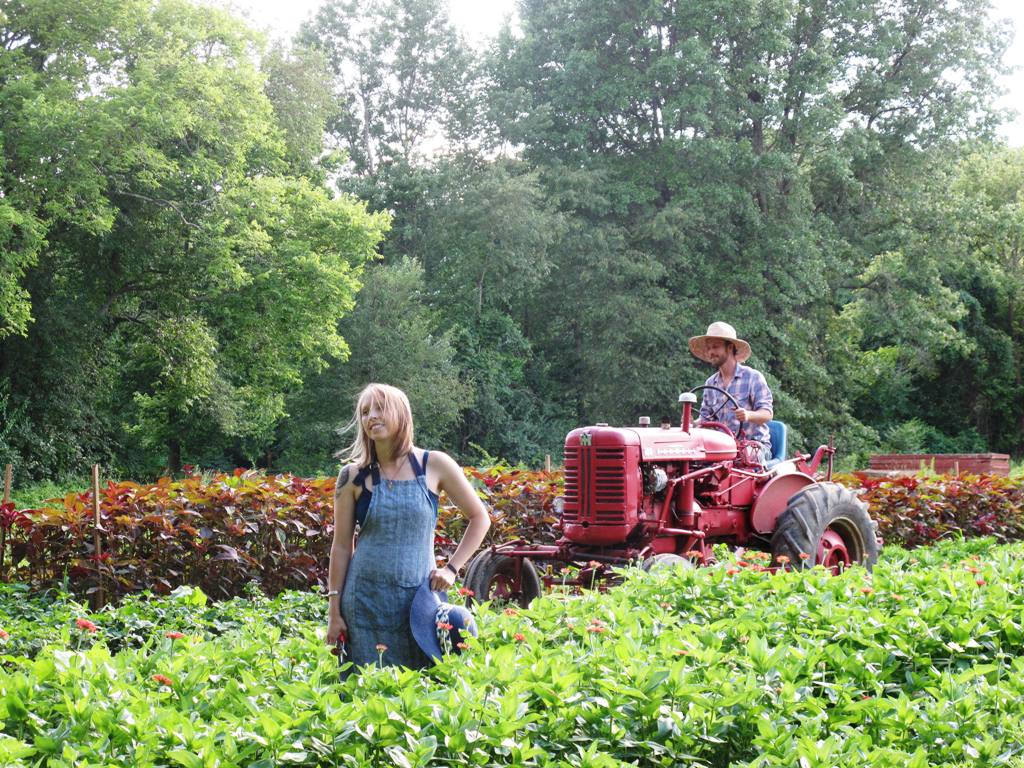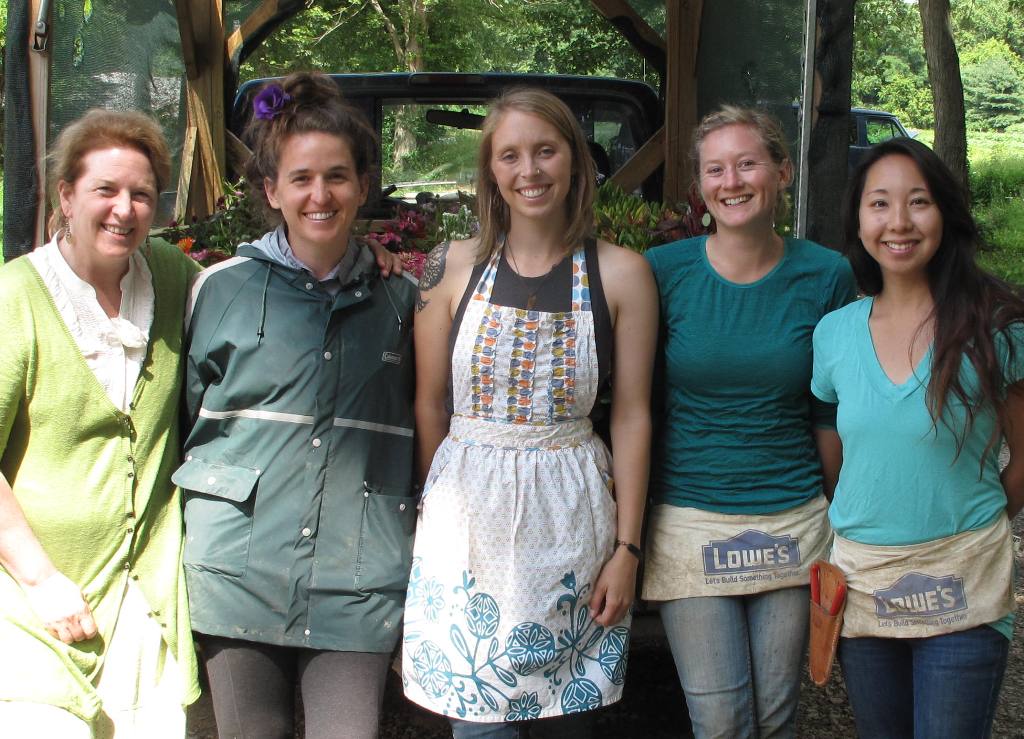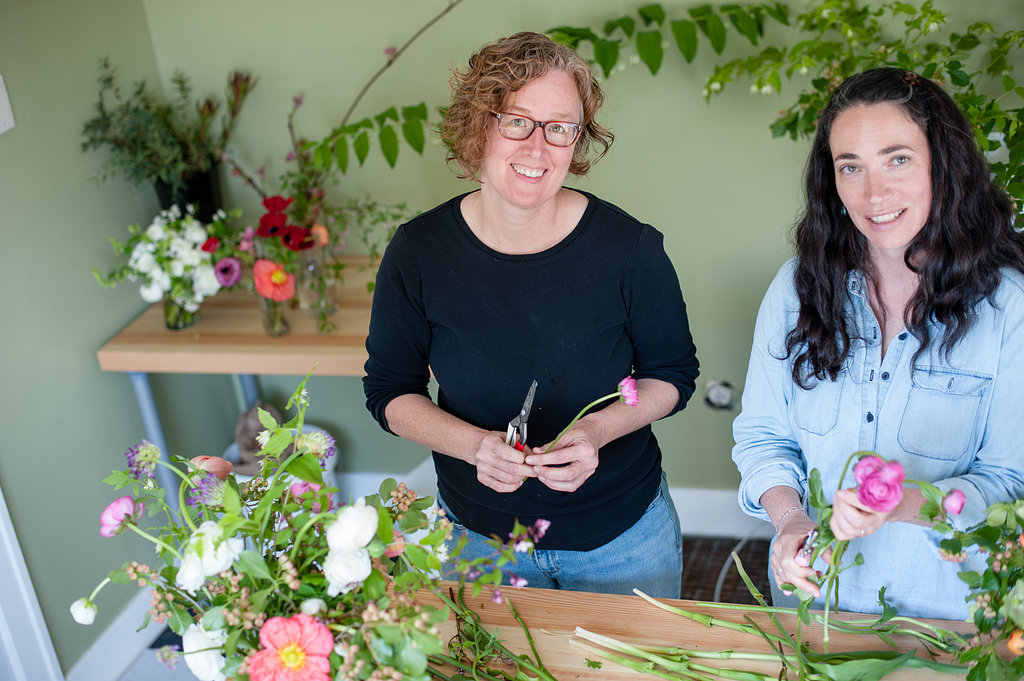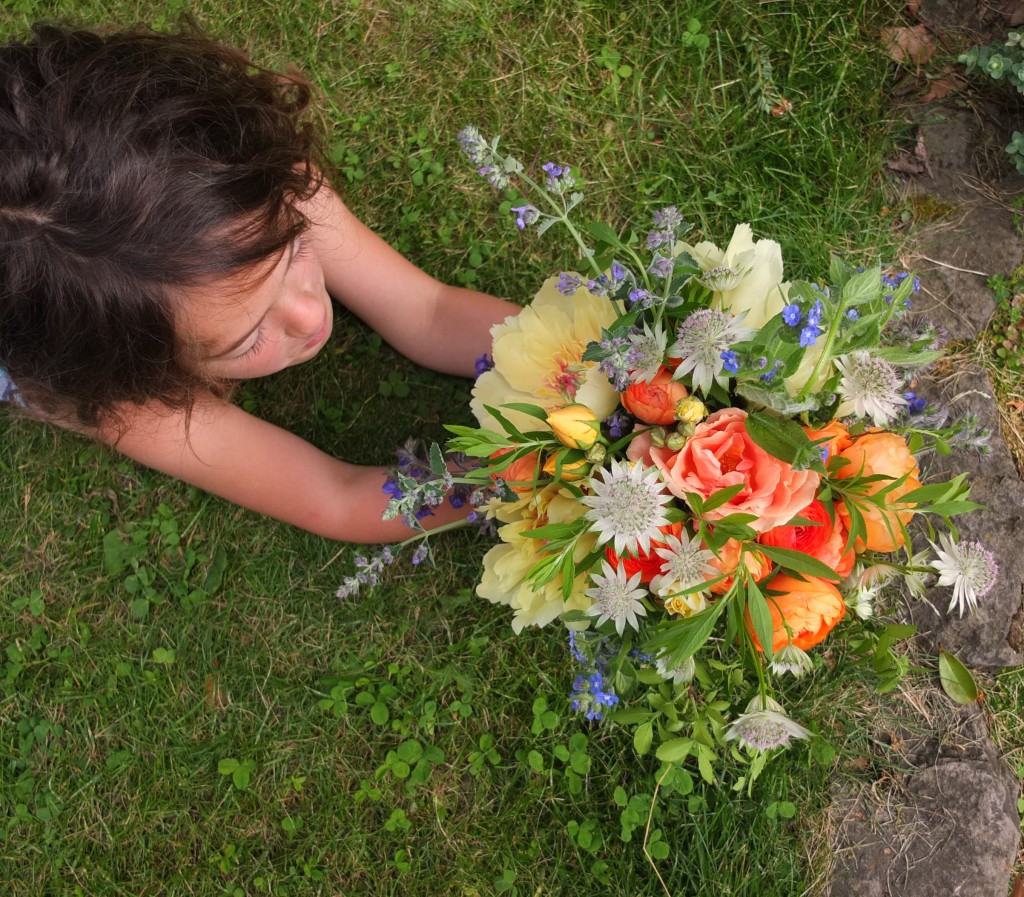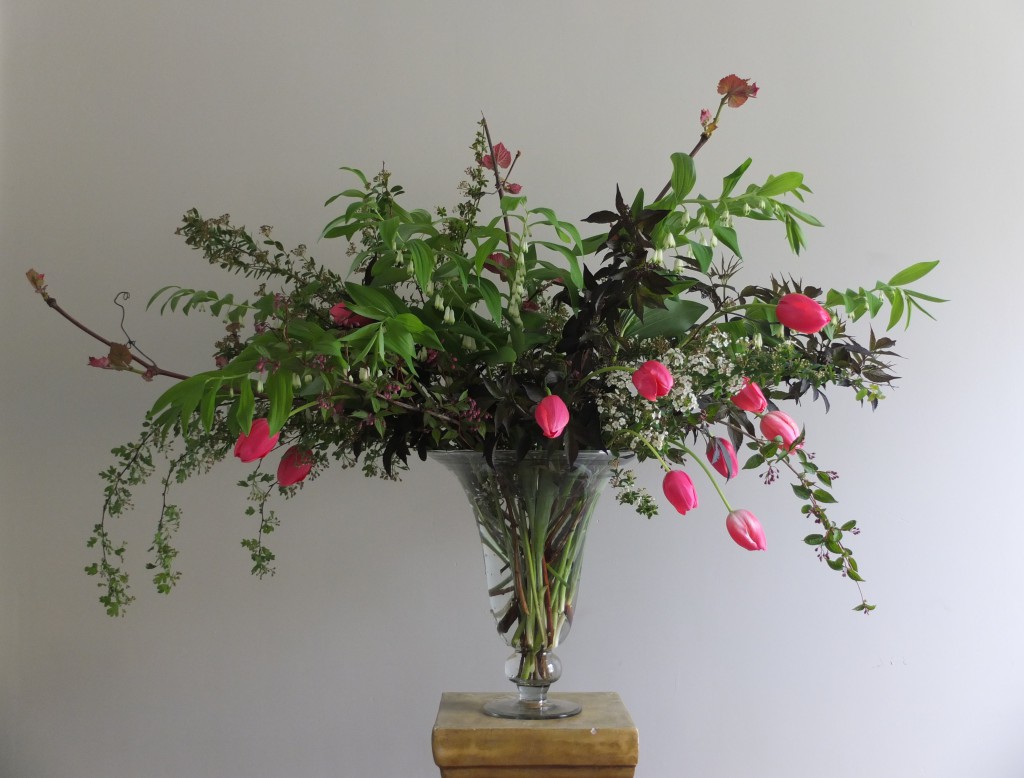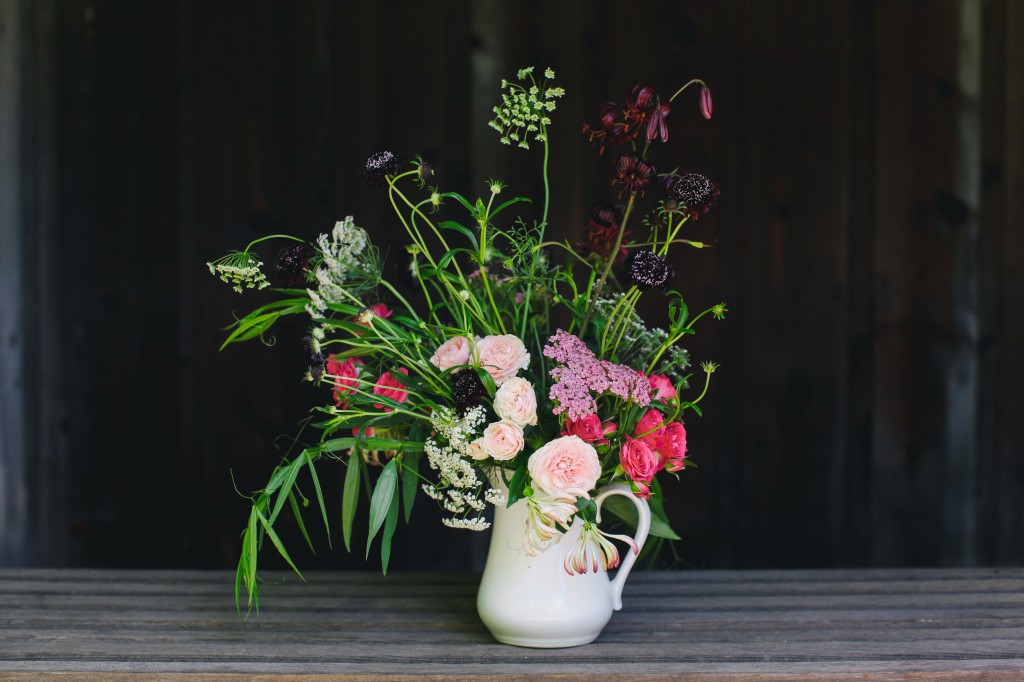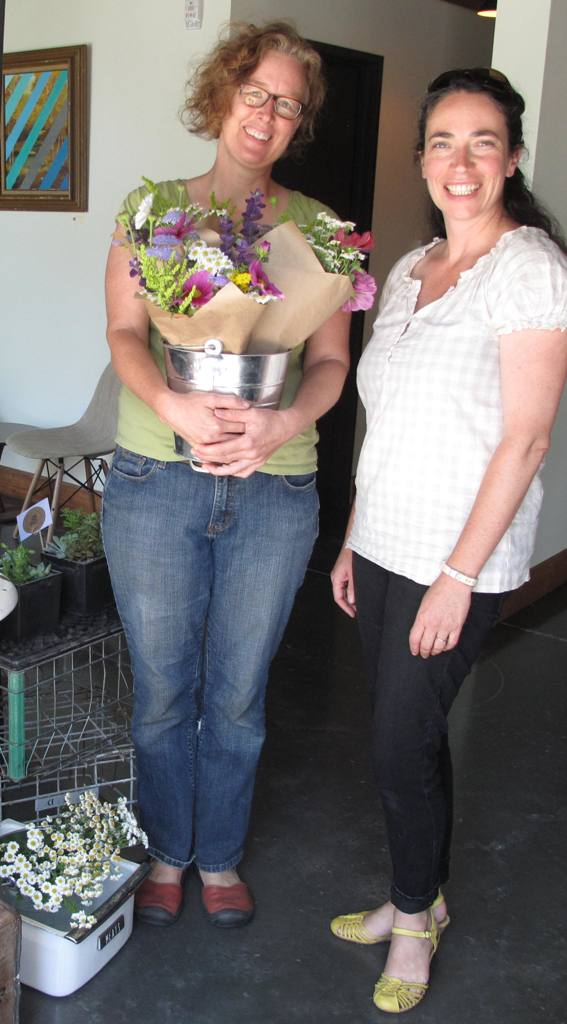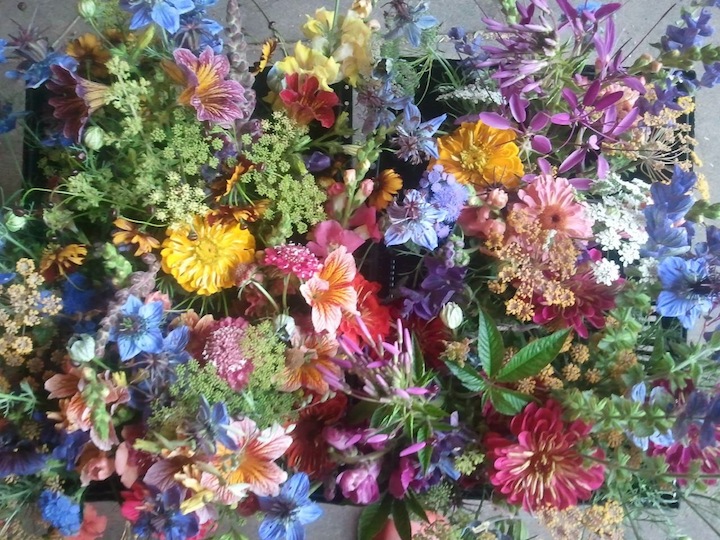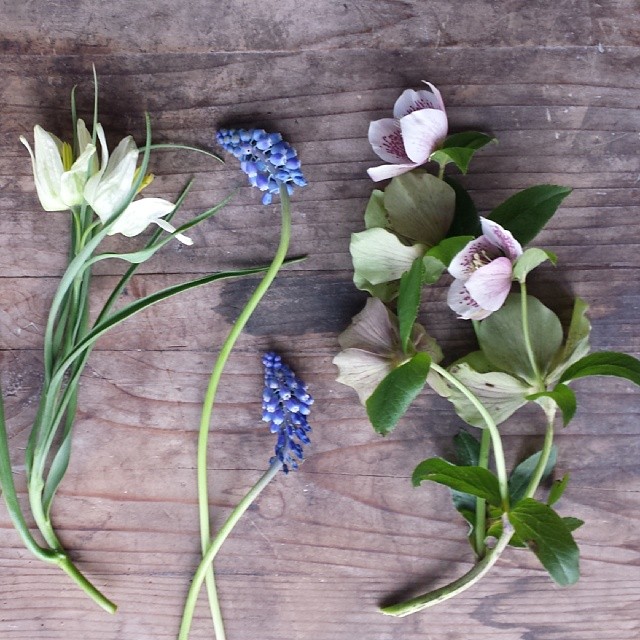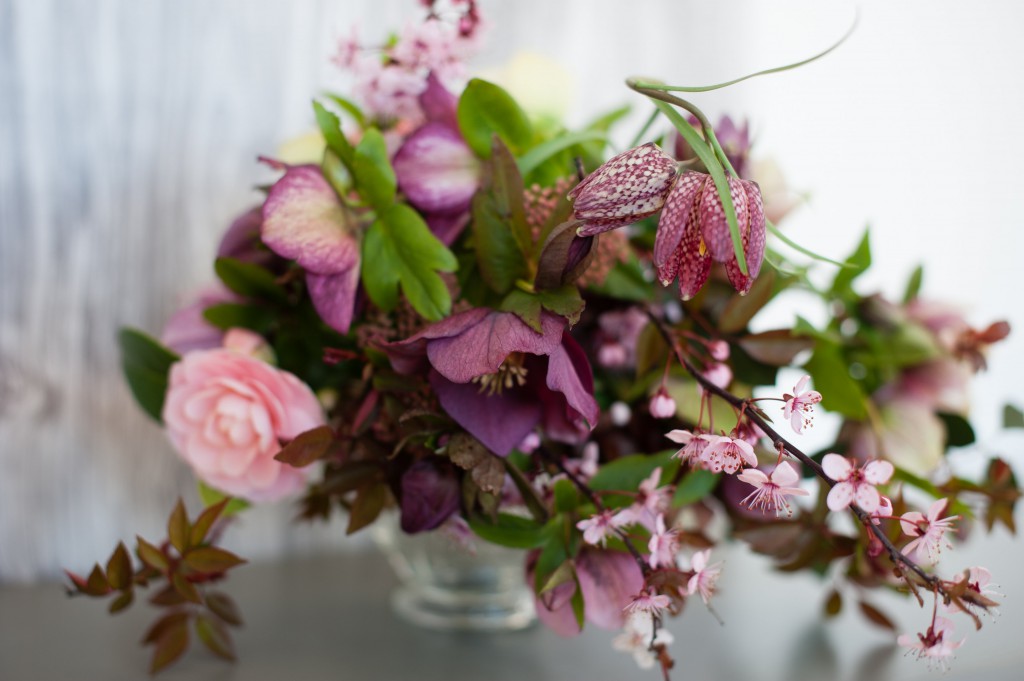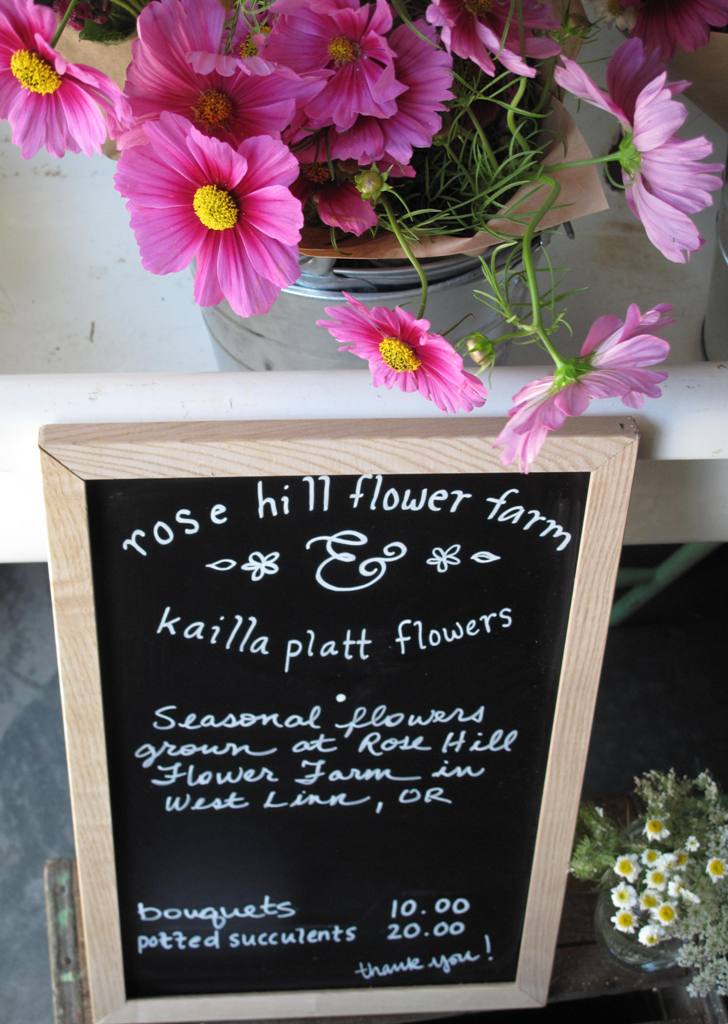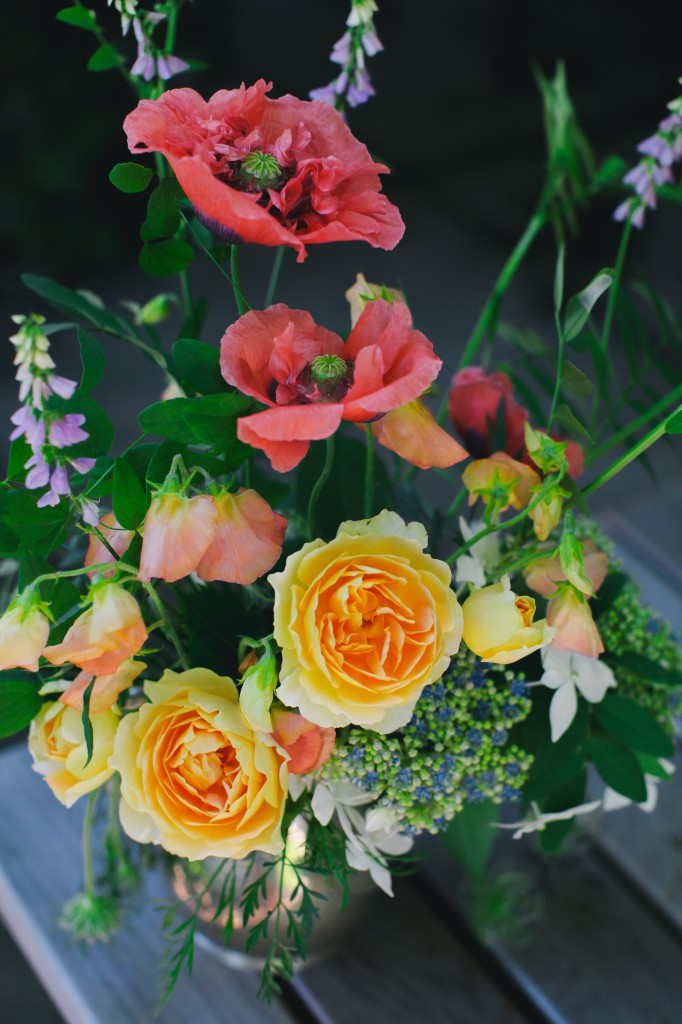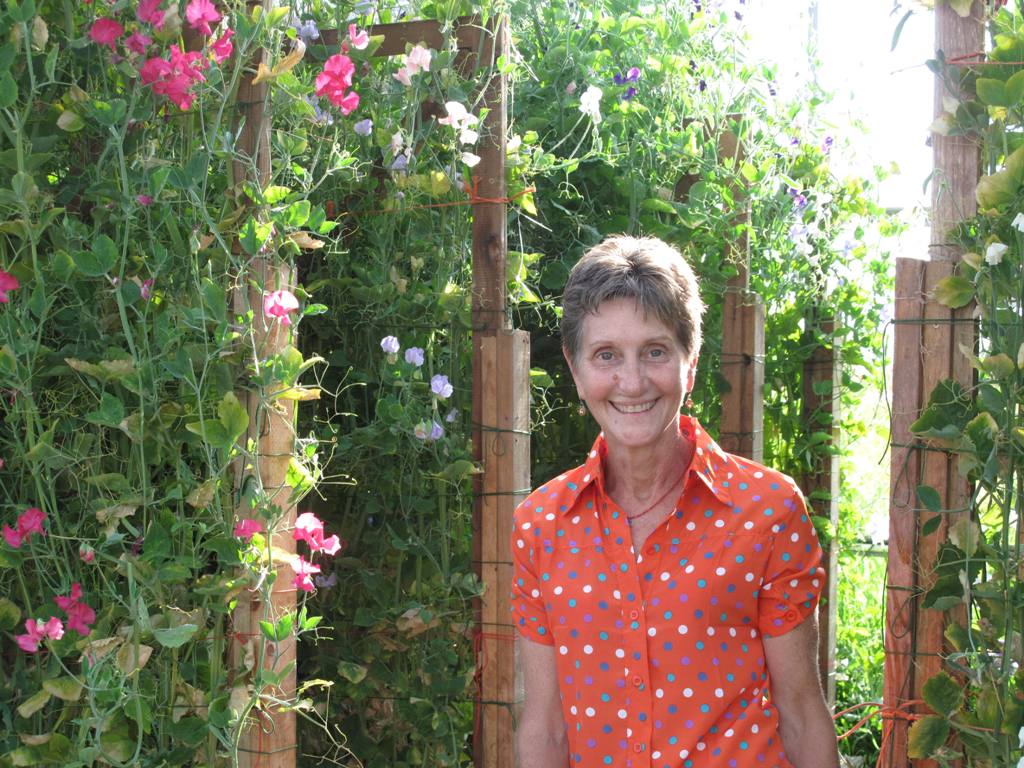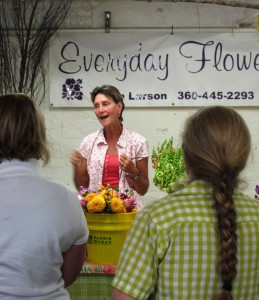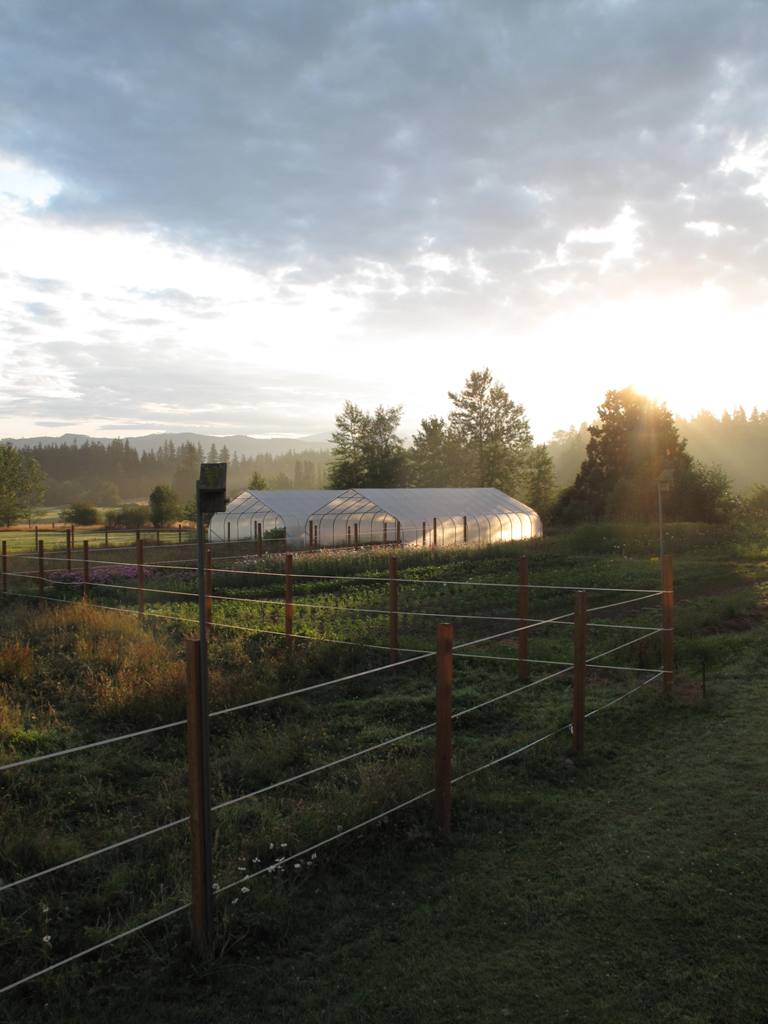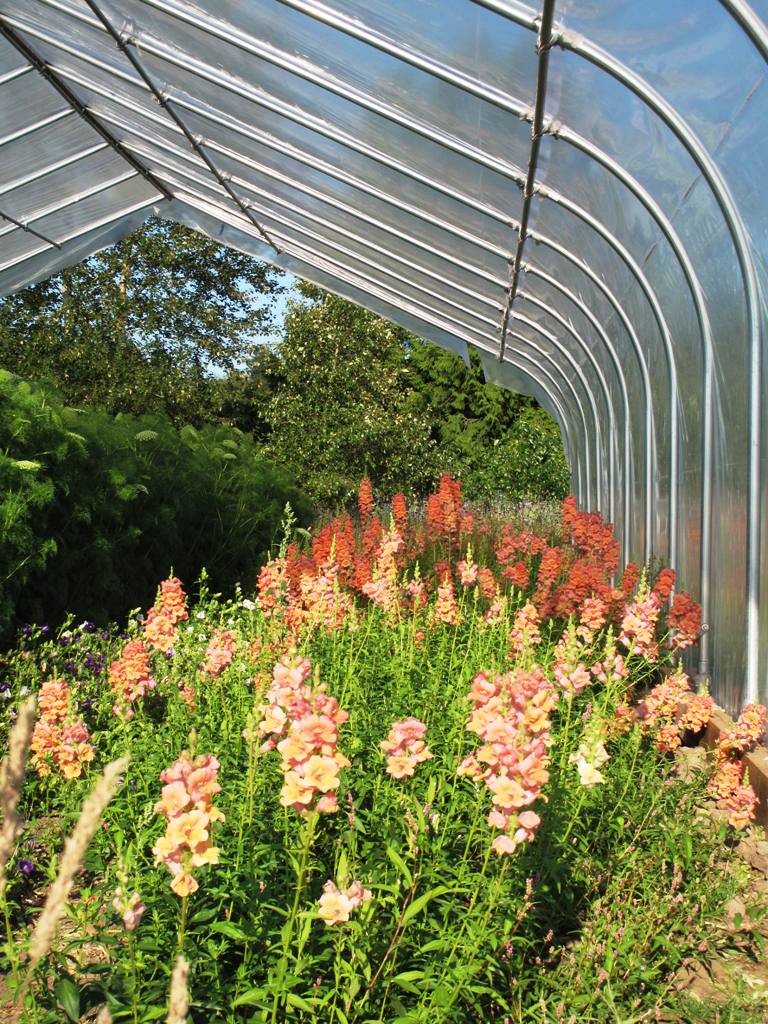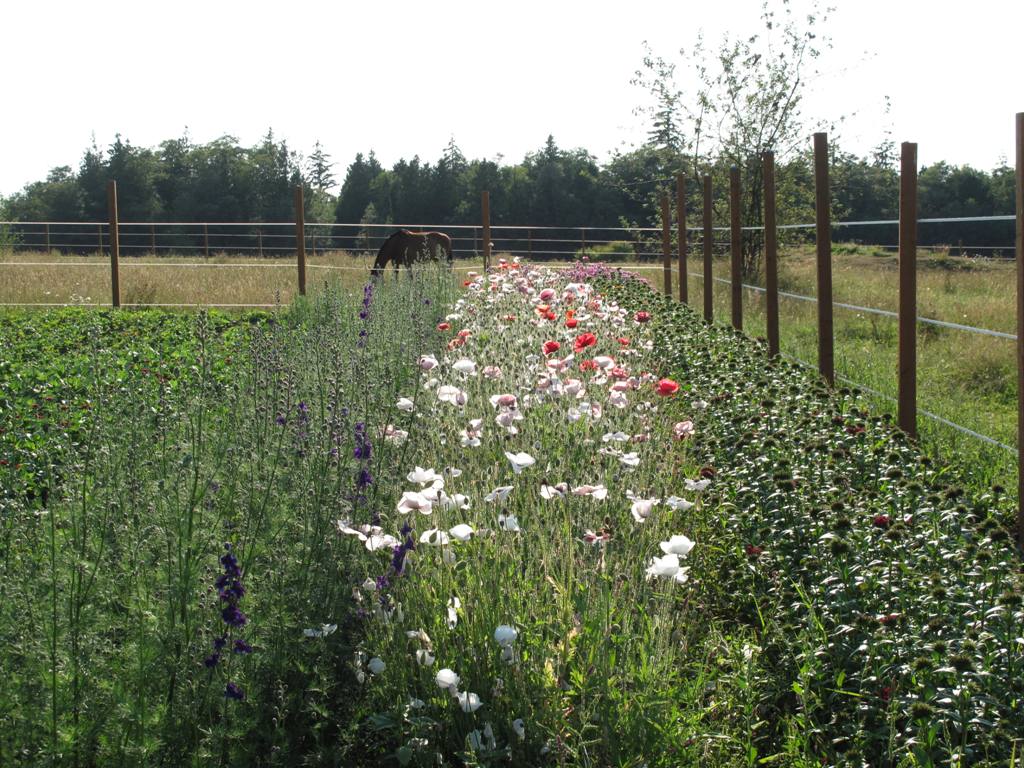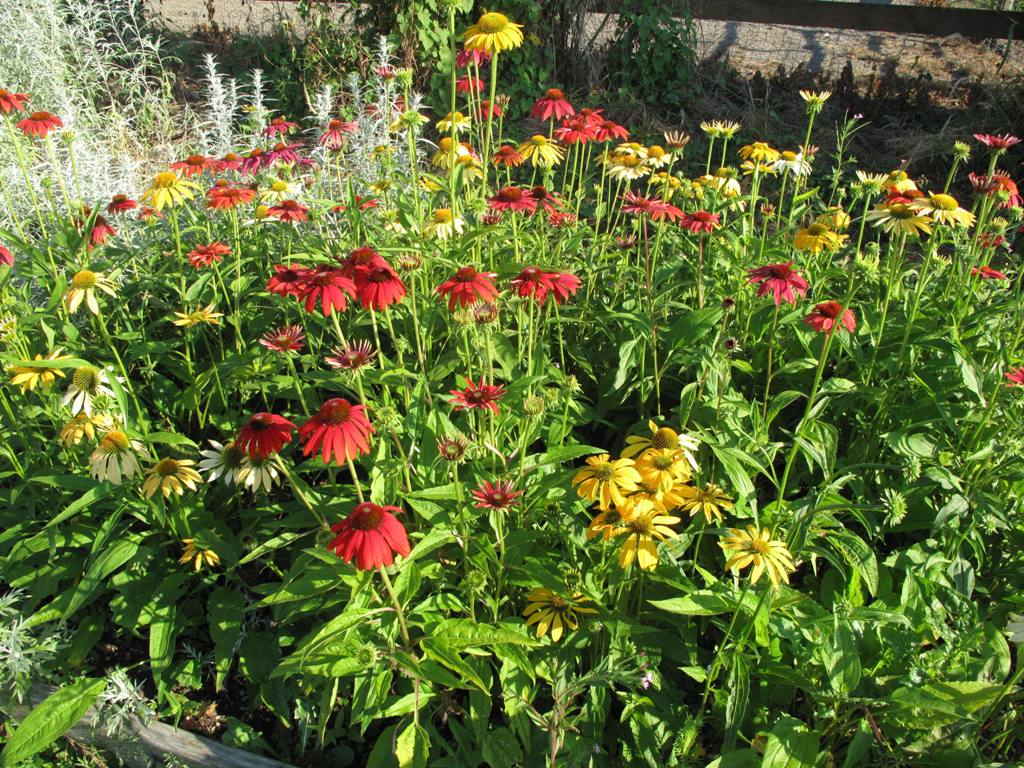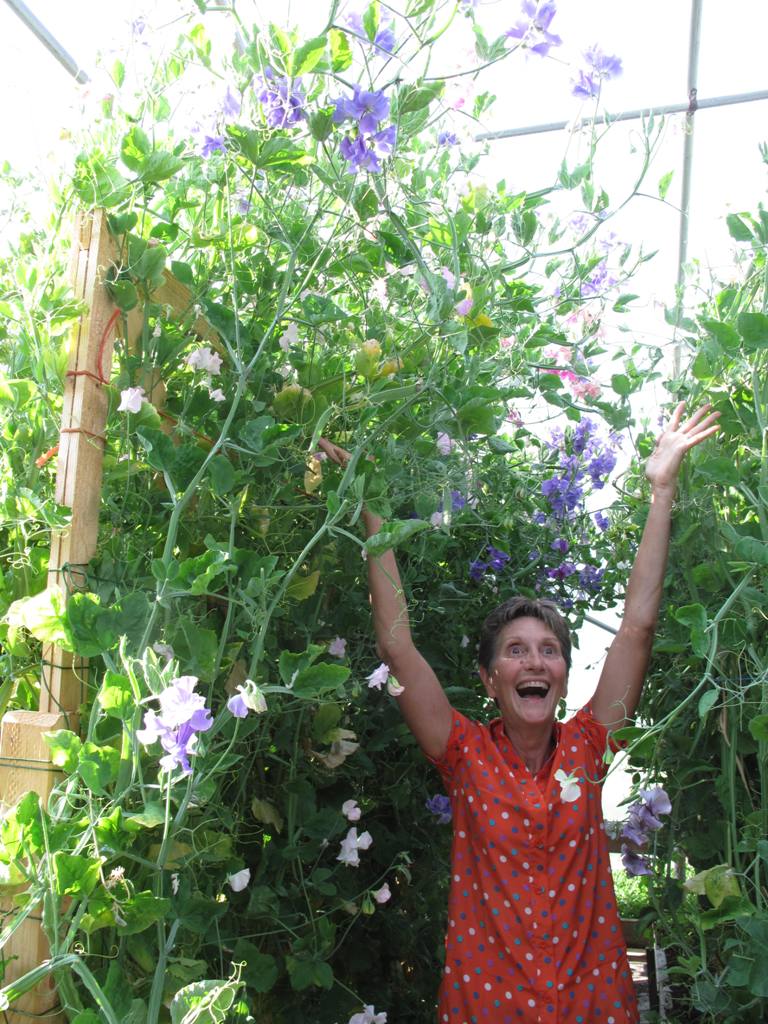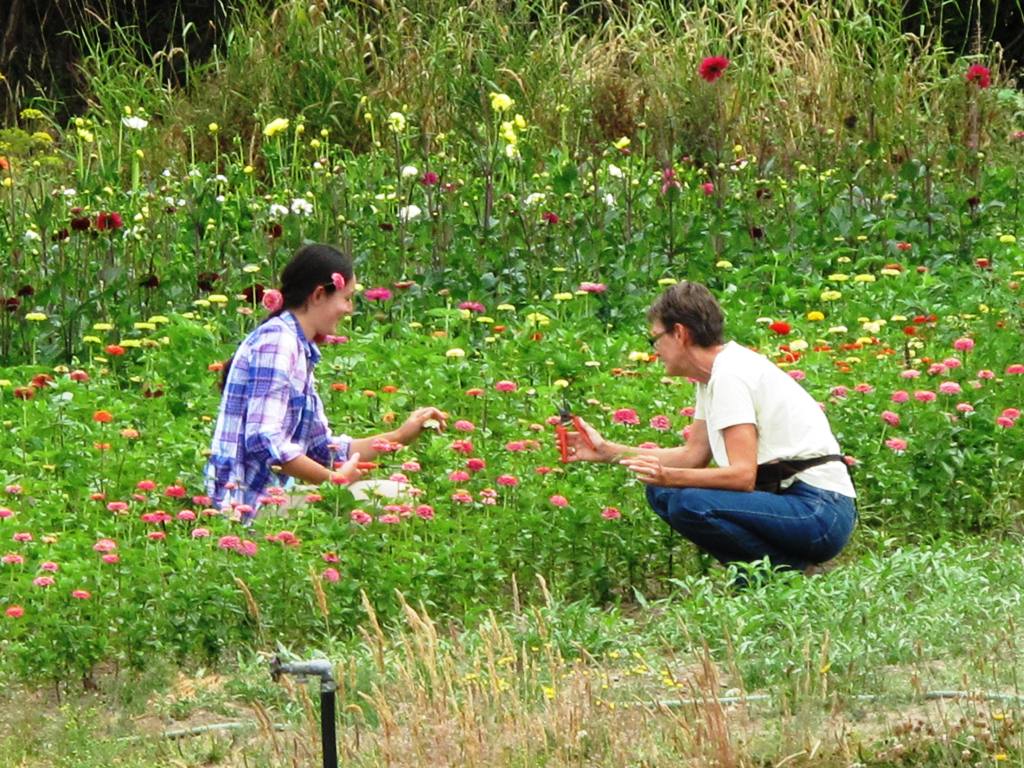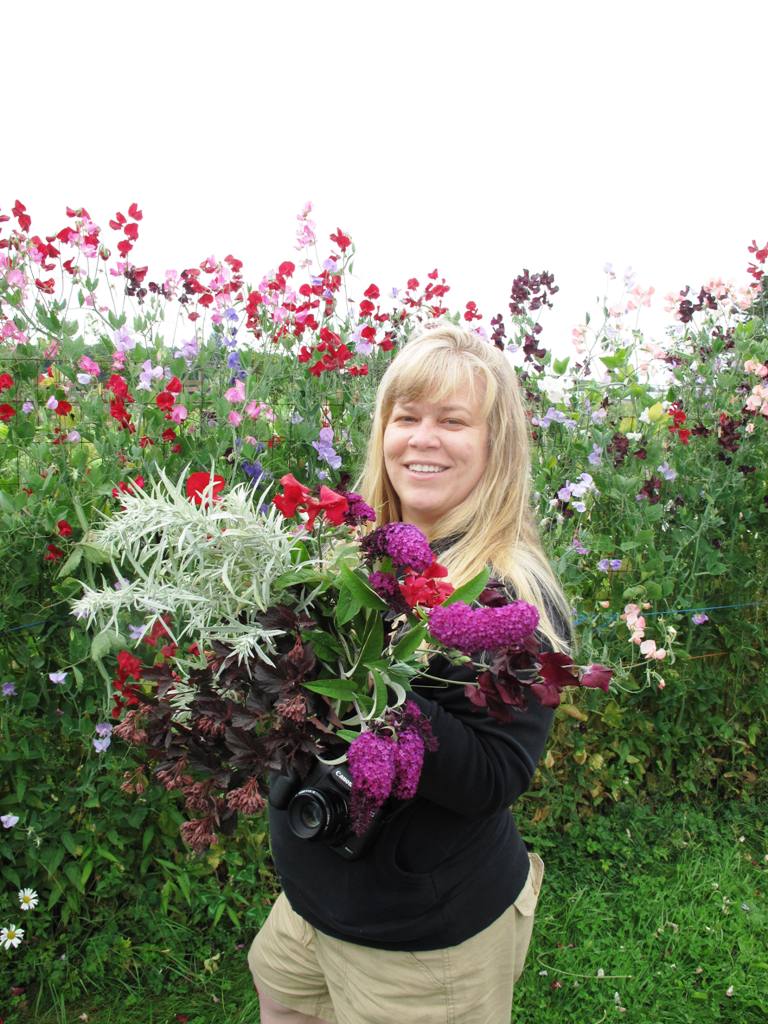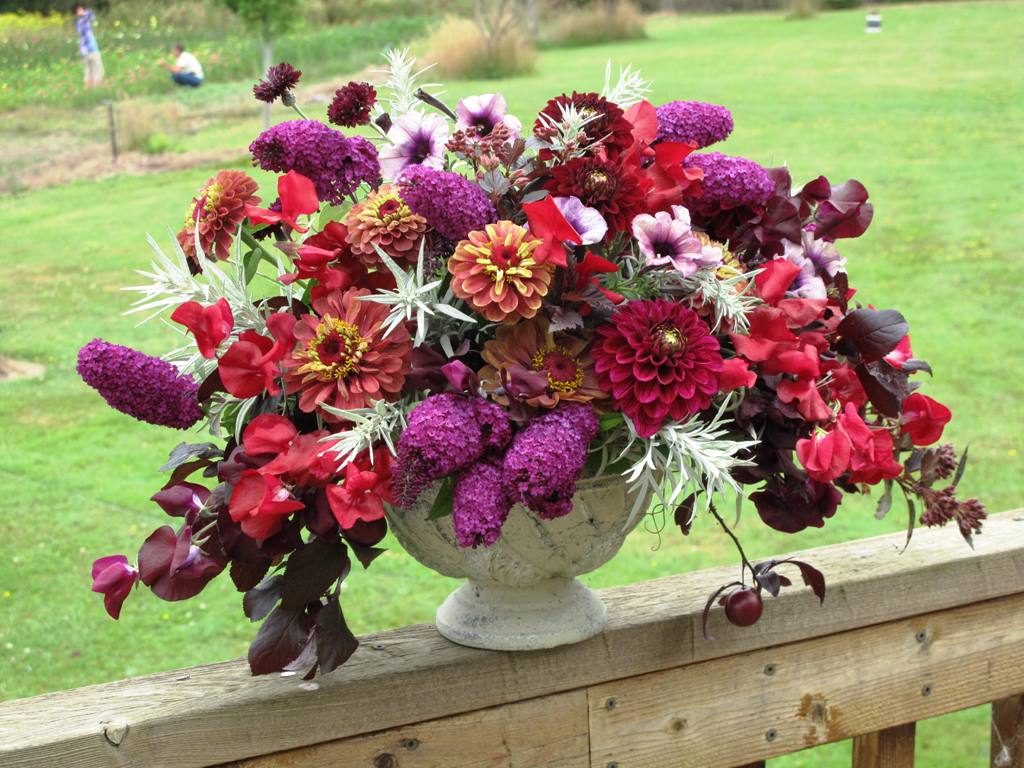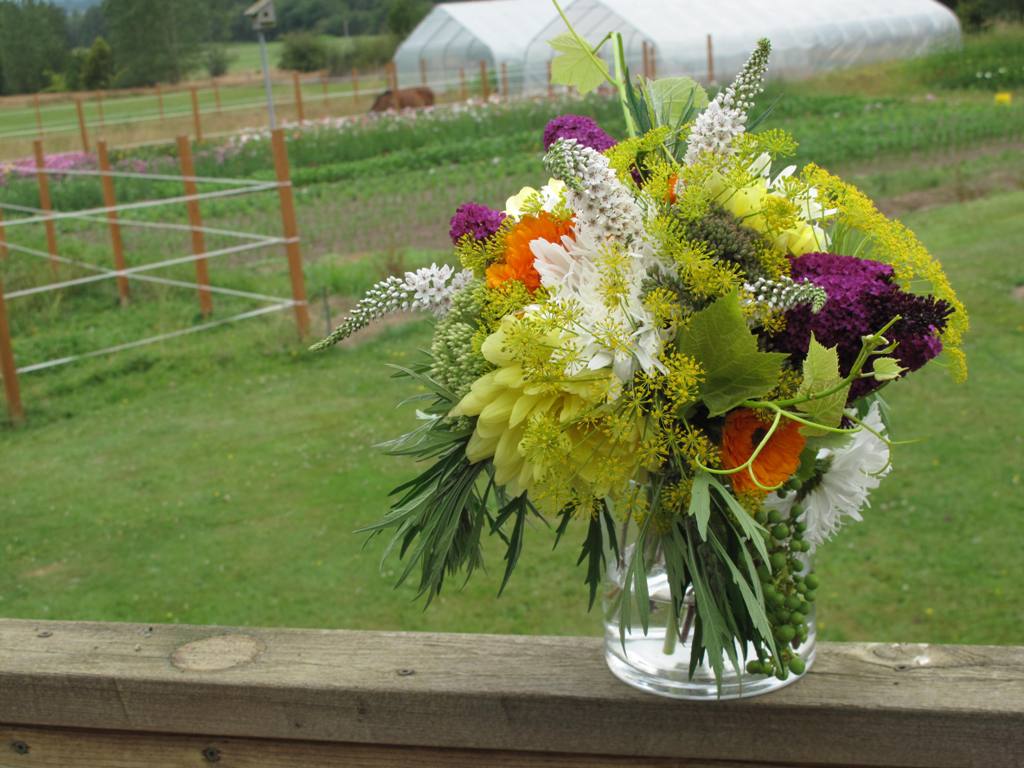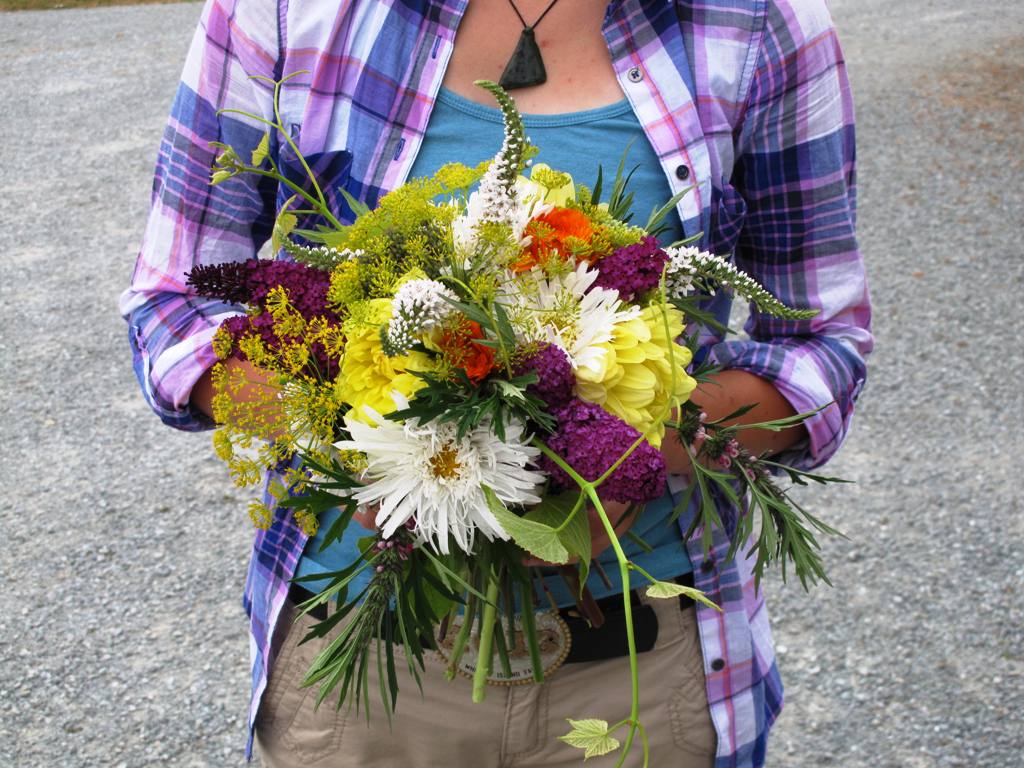Podcast: Play in new window | Download
Subscribe: Apple Podcasts | Podcast Index | RSS | More
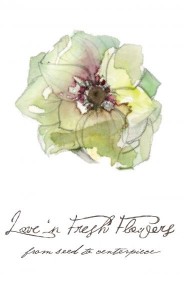 Last month I spent 24 glorious hours at Philadelphia-based Love ‘N Fresh Flower Farm, owned by Jennie Love.
Last month I spent 24 glorious hours at Philadelphia-based Love ‘N Fresh Flower Farm, owned by Jennie Love.
I’ve known Jennie for a few years, in fact, she was a previous guest of this podcast.
But the occasion was my first-ever visit to her beautiful farm, to work with the very talented Rob Cardillo to photograph a feature story about Jennie, her urban flower farm and her design work in a 2015 issue of Country Gardens magazine.
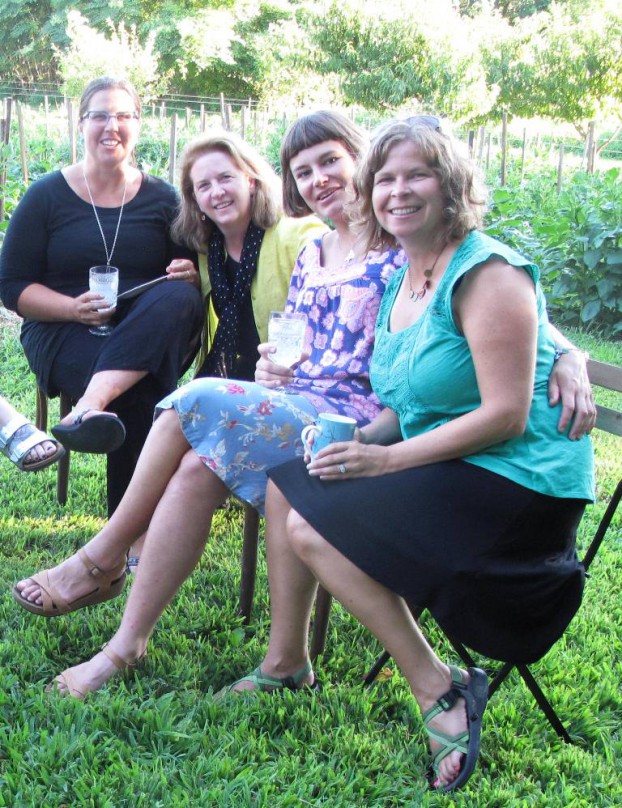
Jennie Love (left) hosted a wonderful field-to-table dinner for so many wonderful friends. I’m next to Jennie, followed by Lindsey Myra and Ellen Frost of Local Color Flowers in Baltimore.
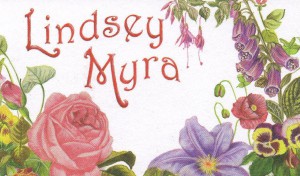 When we were planning the shoot, Jennie mentioned that Lindsey Myra, a flower farmer from Australia, would be spending a month at Love ‘N Fresh on a “fellowship” — and she asked whether I’d like to record a conversation with them? Umm . . . YES – that wasn’t a hard decision to make!
When we were planning the shoot, Jennie mentioned that Lindsey Myra, a flower farmer from Australia, would be spending a month at Love ‘N Fresh on a “fellowship” — and she asked whether I’d like to record a conversation with them? Umm . . . YES – that wasn’t a hard decision to make!
Before I introduce you to Jennie and Lindsey, though, here’s a bonus update about a recent conversation I had with Holly Heider Chapple.
Holly and I met early in 2014 and since then we have had an ongoing conversation about the American Grown flower movement and how the members of Chapel Designers, her group of wedding and event florists, can get more involved in the Slow Flowers project.
As it turns out, several Chapel Designers are members of Slowflowers.com, and we just added Holly Heider Chapple Flowers, Holly and her husband Evan’s design studio, to the site.
After discussing the All-American concepts with Holly, I began to understand that some designers feel I’ve made it a black-and-white issue. Either you use 100% percent seasonal or local flowers, or you use 100% imports. However, the reality for many is somewhere between.
The impetus behind today’s conversation began last week when Holly posted a beautiful arrangement on her instagram feed and I made a comment saying: Holly, those look American Grown. She responded that it was mostly all domestic flowers, but she didn’t want to make the #americangrown claim just in case one or two stems were not.
I love what Holly wrote in one of our text exchanges:
“If we add the percentage of how much is American grown, I think it will really get people – designers and brides – thinking and causing us all to learn. I like this (idea) because it pushes us to think about it and (to) really understand where things are coming from. It would also allow us to post designs that are barely American grown – and people will see how the looks vary, depending on how much local product there is. I also think it will be very interesting to have a documented board of images that show the differences of the designs between those that are heavily American grown flowers and those that are sourced from other countries.”
So if you follow this percentage concept, post photos of your designs and use this hashtag: #americangrown50% or #americangrown100%. Please remember to add #slowflowers and #fieldtovase and other relevant hashtags, too!
Over time, I bet this approach will engage even more floral designers in thinking about the origins of the stems they use. I love where Holly is going with this. The natural beauty and inherent character of domestic flowers will go far to demonstrate the value of staying close to home when you source. That’s exactly what Slowflowers.com is all about.
NEXT, our MAIN FEATURE: A lovely story of how Jennie and Lindsey met through social media and how they cooked up an international flower farmer exchange.
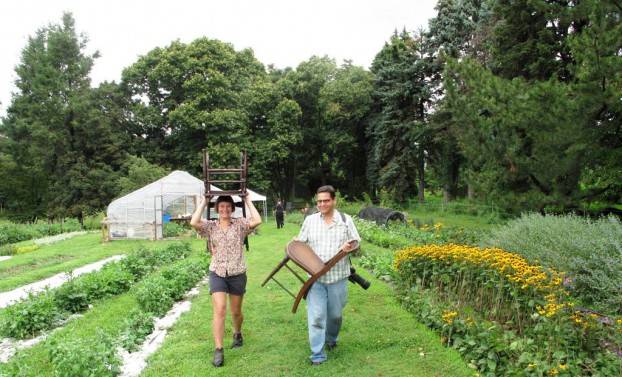
Lindsey (left) and Rob Cardillo (right), hauling chairs that we planned to use in a vignette of flowers.
Since it was winter at Lindsey’s flower farm in Australia, the chance to spend the month of August on a U.S. flower farm was enticing. Similarly, in the future, perhaps even this coming winter, Jennie hopes to visit Lindsey during her peak season – when Philadelphia flower fields are under snow.
These nontraditional ways of doing business fascinate me to no end. I love the way creative flower farmers and florists are circumnavigating conventional methods of commerce and proving that one plus one equals way more than two.
Let me tell you briefly about Lindsey Myra. She is an artist, a florist, a writer and a flower grower. She writes on her web site: ” I am stumbling upon wonder every day. Enchantment and fascination in the natural world infuses my work and stimulates my enthusiasm for botanical culture.”
In 2012, motivated by a desire to provide a positive alternative in the cut flower industry, Lindsey started The Little Flower Farm, her own small-scale, organic flower farm, planting flowers on a borrowed backyard in Melbourne’s northern suburbs.
The Little Flower Farm is the first of its kind in Victoria. According to Lindsey, the farm is motivated by three key ambitions: to offer a more environmentally sustainable product, to encourage others to embrace the living world within their own lives and lastly, a personal desire to create beauty and lots of it! The Little Flower Farm produces organic, true to type, heirloom blooms. Founded on the principles of permaculture and rooted in a true passion for flora, she provides a positive and sustainable approach to cut flowers.
2014 has seen The Little Flower Farm move to a larger, rural plot in the Macedon Ranges, an hour north of the city. Last season Lindsey’s flowers were consistently retailed by Cecilia Fox and North St Botanical, floral studios in Melbourne. This year she plans to also offer a Community Share Agriculture (CSA) subscription to deliver seasonal, farm fresh, organic flowers direct to floral customers. All flowers are grown out in the open air and as such are truly seasonal, September to June.
Jennie Love had her first flower patch at age four in her mother’s huge kitchen garden on a 5th generation family farm in central Pennsylvania — growing straw flowers and nasturtiums. She writes: “My soul has ever since been connected to the shifting of the seasons and the nurturing of unfurling petals and leaves.”
Ironically, Jennie says she needed to run away to the big city to realize just how much farming meant to her. She couldn’t resist the pull of the land.
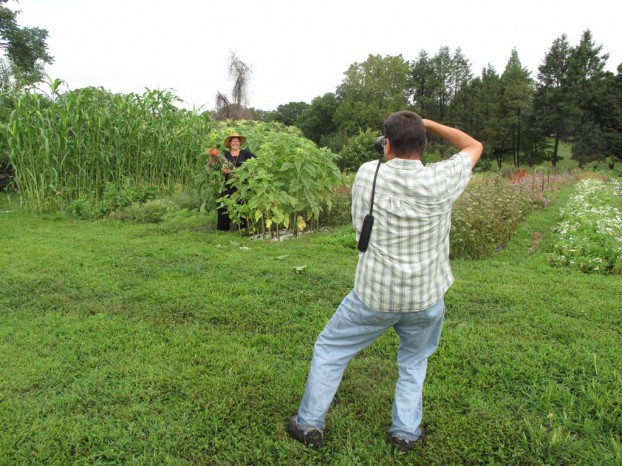
On Location at Love ‘N Fresh Flowers – here, my colleague Rob Cardillo as he captures Jennie’s portrait in the flower fields.
By the time Jennie could no longer deny her need to nurture nature, she had already put down serious roots in Philadelphia. And so, Love ‘n Fresh Flowers was born as one of the first and few urban flower farms located within a big city’s limits. Urban flower farming has proven to be just about the best thing she could have ever dreamed up. Jennie finds it even more gratifying to be the stewardess of two acres of dwindling urban green space than it would be to own a vast expanse in a more rural locale. It means the world to her to be able to create and sustain a healthy ecosystem within this concrete jungle.
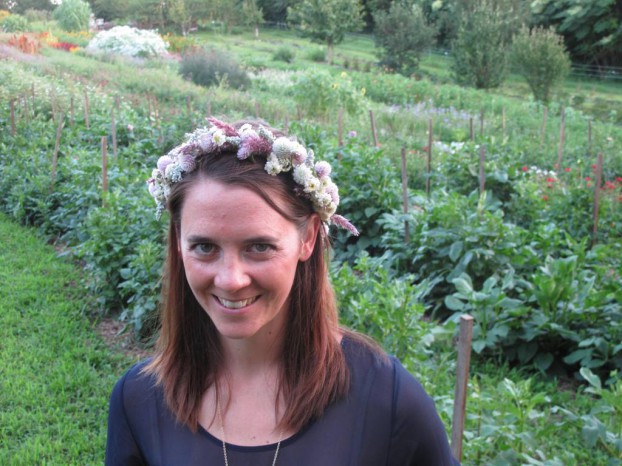
A beautiful Love ‘N Fresh team member models her equally beautiful flower crown, fashioned by Jennie Love during our podcast interview.
The flowers that Jennie grows inspire every single element of her little flower business. She says: “It’s an amazing gift to be able to walk the fields, cut what is at the peak of perfection, and take it into the design studio to create a piece of living art. Somehow that never gets old for me, even after thousands of bouquets. While flower farming and event design is exhausting, all-consuming work, I never ever tire of the flowers and their charms.”
Jennie is a leader in the American Grown floral community, much sought out for her flower farming knowledge and her exquisitely natural design aesthetic.
At the end of our conversation, I asked Jennie to discuss the upcoming ASCFG national conference, which takes place October 19-22, 2014 in Wilmington, Delaware.
Jennie is a co-chair of the conference, with the theme “Growing Growers.” Slow Flowers is a media sponsor of this conference and I’m very much looking forward to joining Jennie and so many other flower farmers and farmer-florists around the country at that event.
Jennie/Love ‘N Fresh on Instagram
Jennie/Love ‘N Fresh on Facebook
Jennie/Love ‘N Fresh on Pinterest
Lindsey/The Little Flower Farm on Instagram
Lindsey/The Little Flower Farm on Facebook
Finally, I’m thrilled to announce that the Slow Flowers Podcast has reached yet another milestone. This week we hit our 20,000th downloaded episode.
That’s cause for celebration and I thank listeners like you for your support. If you like what you hear, please consider logging onto Itunes and posting a listener review.
My personal goal is to put more American grown flowers on the table, one vase at a time. I promise that when you tune in next week, you’ll hear another insightful and educational episode of the Slow Flowers Podcast.
And speaking of this podcast, here’s a huge thanks to my engineering and editing team, Hannah Holtgeerts and Andrew Wheatley. Learn more about their work at hhcreates.net









